64 Global Home Decor Style Ideas to Inspire World-Inspired Interiors
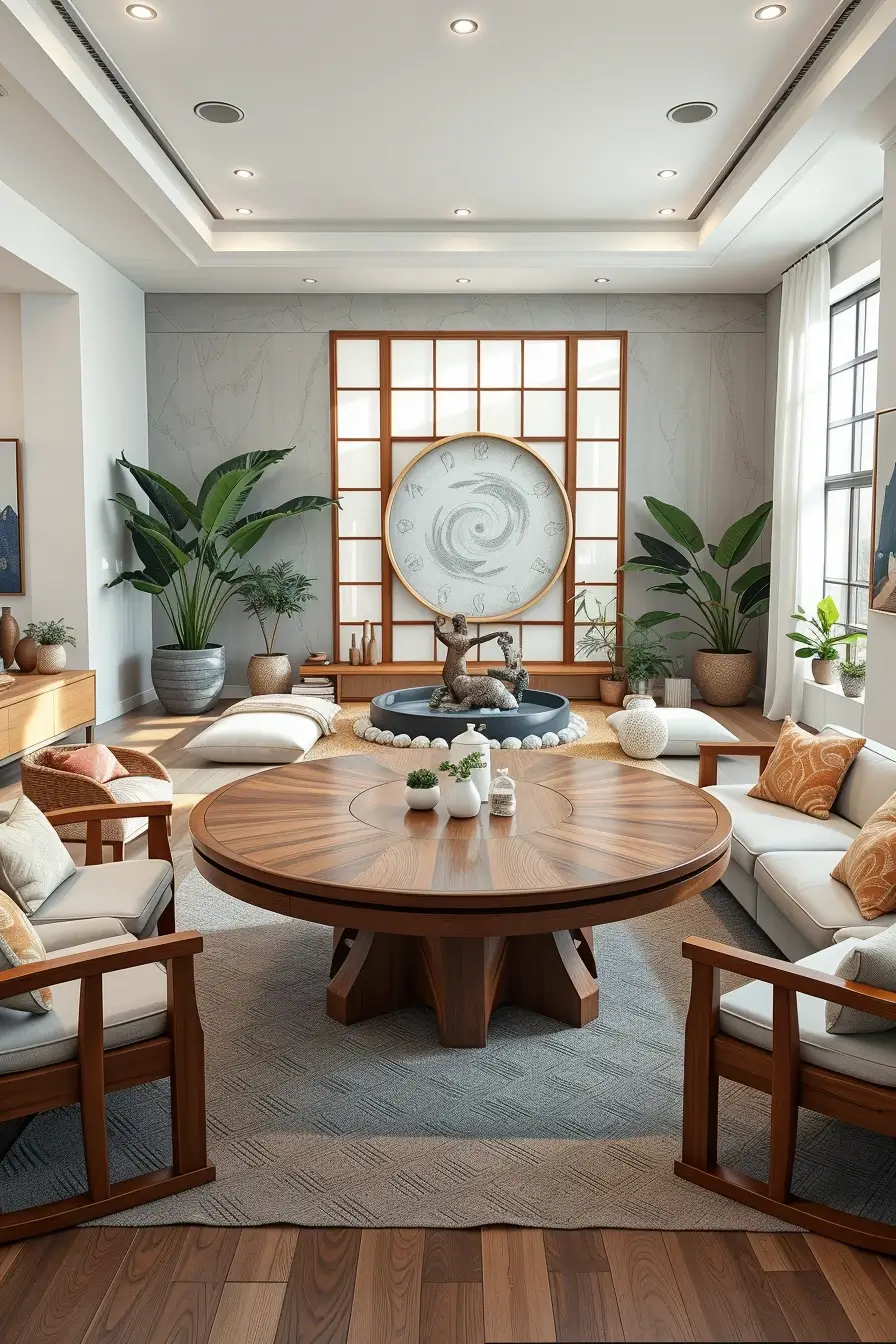
Do you wish to spice up your home with inspiration from different cultures? Do you want to give your home a sense of identity and make it modern, easy to use and usable at the same time? Today, I will introduce you to various worldwide home decor styles, tell you why they stand out and give some ideas on how to include them in your decoration. No matter if you prefer Moroccan or Japanese style, this guide helps you achieve stylish living everywhere.
Bohemian Vibes With Moroccan Home Decor
Each time I think of home decor that is colorful, patterned and full of culture, Moroccan style is what I picture. The rooms stand out with a bohemian style using eye-catching textiles, fancy patterns and fun accents. You can display this style in any home size, from small to big, since it adds warmth and comfort through the use of lovely natural colors and detailed furniture.
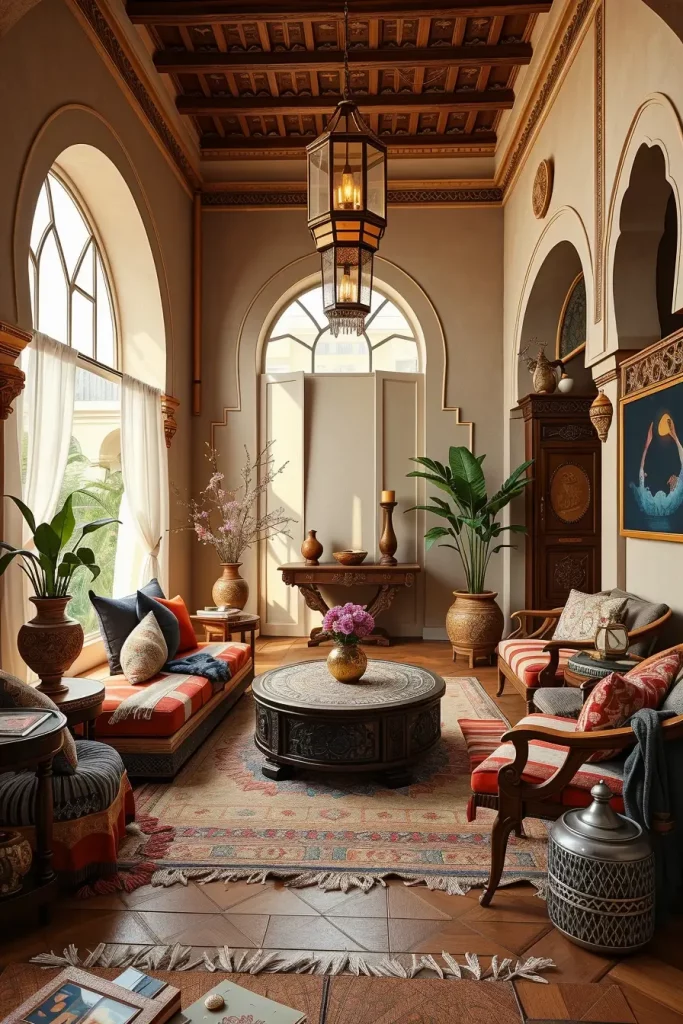
Usually, I begin by finding a rug that is either Berber or Beni Ourain as the foundation. When you mix poufs or floor cushions with carved wood tables, it looks more realistic. Subdued brass or silver lanterns, mosaic tiles and leather throw pillows enhance the design of the living space. Having ceramic vases and hanging fabrics in wall niches turns them into memorable highlights.
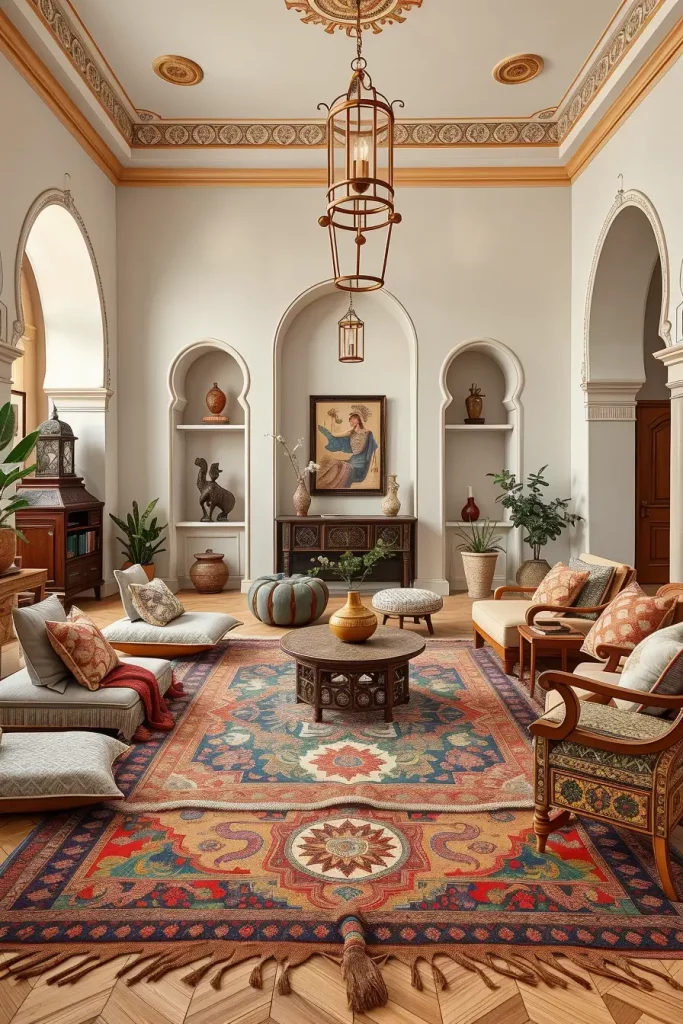
I find it wonderful that Moroccan decor matches so smoothly with other designs. I like to use poufs from Morocco in minimalist spaces, as a point of contrast and add carved mirrors to Scandinavian rooms to make them feel warmer. According to Architectural Digest, it’s important to make Moroccan interiors special by using lots of pattern and neutral colors.
If you wish to enhance this section, include some terracotta planters, wood lattice panels and a big archway if it fits. Apply these final touches to enhance the theme and not make the room look busy.
Japanese Zen Interiors for Calm Living
Japanese Zen decorating style is perfect for those who want a simple and calming atmosphere. The main ideas behind this style are harmony, minimalism and the use of natural materials. It encourages a calm and serene atmosphere which is perfect for anyone in search of balance in their hectic life.
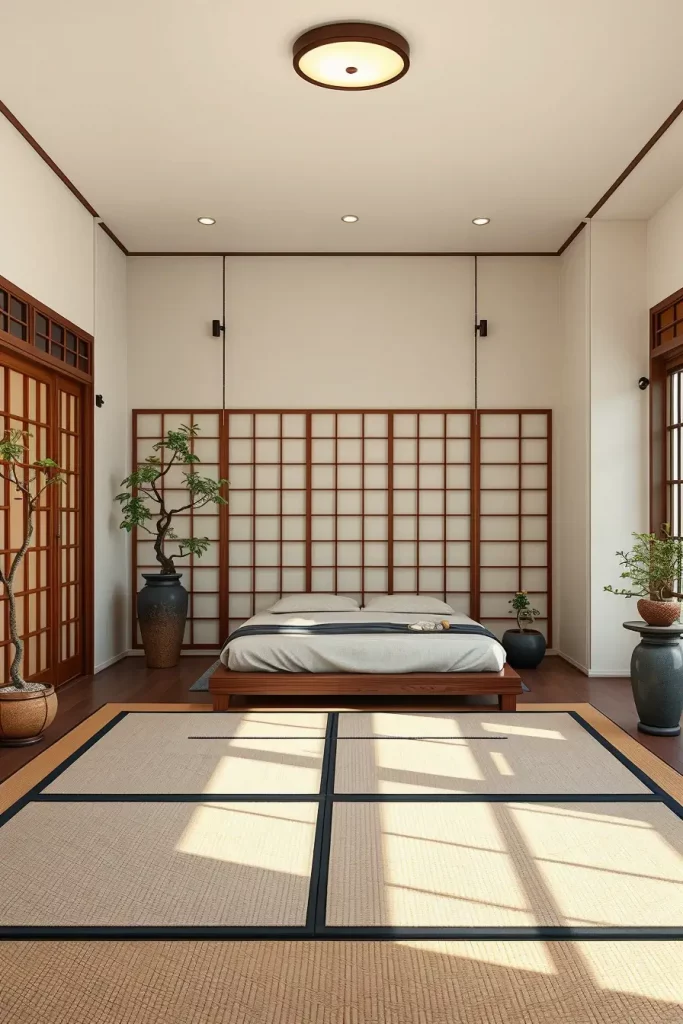
The design starts from natural tatami-style mats or wood floors, always keeping the colors neutral in light shades like beige, grey and a little wood. The furniture is close to the floor, including beds without legs, armchairs with none and super low-lying tables. Shoji screens partition areas in a soft way and bonsai plants and rice paper lamps provide some interesting detail. Having straightforward storage places keeps your home orderly and calm.

Even when working with little space, this approach turns an apartment into something amazing. I even refer to advice from Dwell Magazine: Less is more when it comes to interior design. This is especially the case when you’re in a Zen space.
A rock garden, a small waterfall or an alcove for placing decor related to the seasons will enhance the Zen look. The finishing touches add life and significance to the space.
Scandinavian Minimalism With Hygge Comfort
Its straight lines, functionality and placing importance on making consumers comfortable have earned Scandinavian design respect. Many people find it simple to use this global home decor because it remains attractive forever and does not stand out too much.
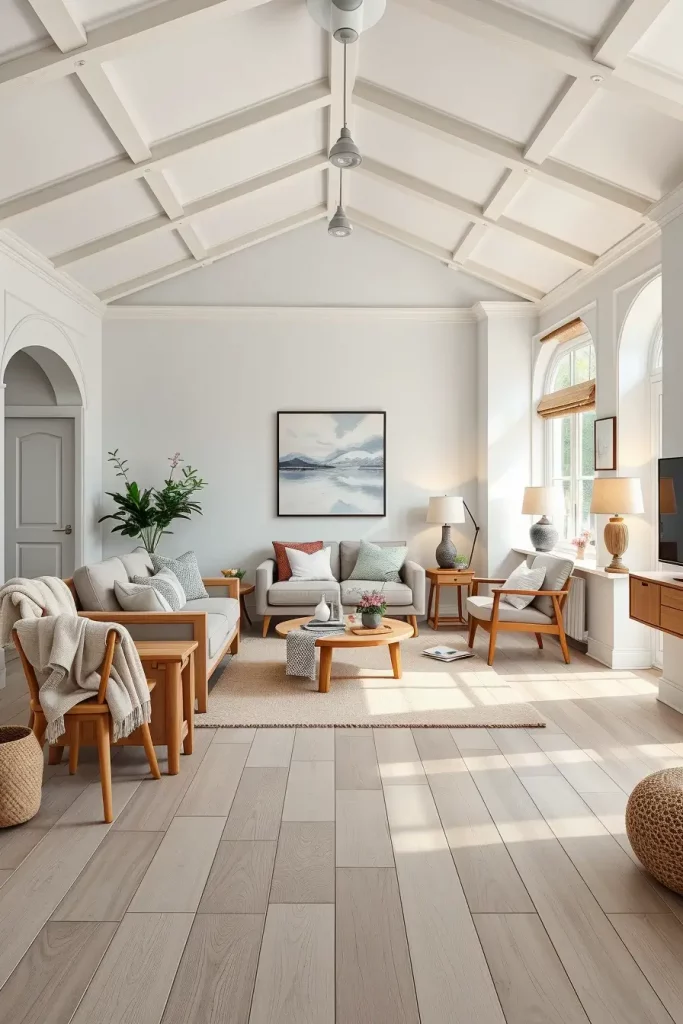
For my designs, I prefer to have white or grey walls and pale wood floors. I go for furniture with simple outlines such as oak tables, easy chairs upholstered in natural fabric and storage pieces that are useful. Throws, poufs and baskets made with natural materials create a nice element in your home. Lighting the room with lamps on tables and around the walls will help create a hygge atmosphere.
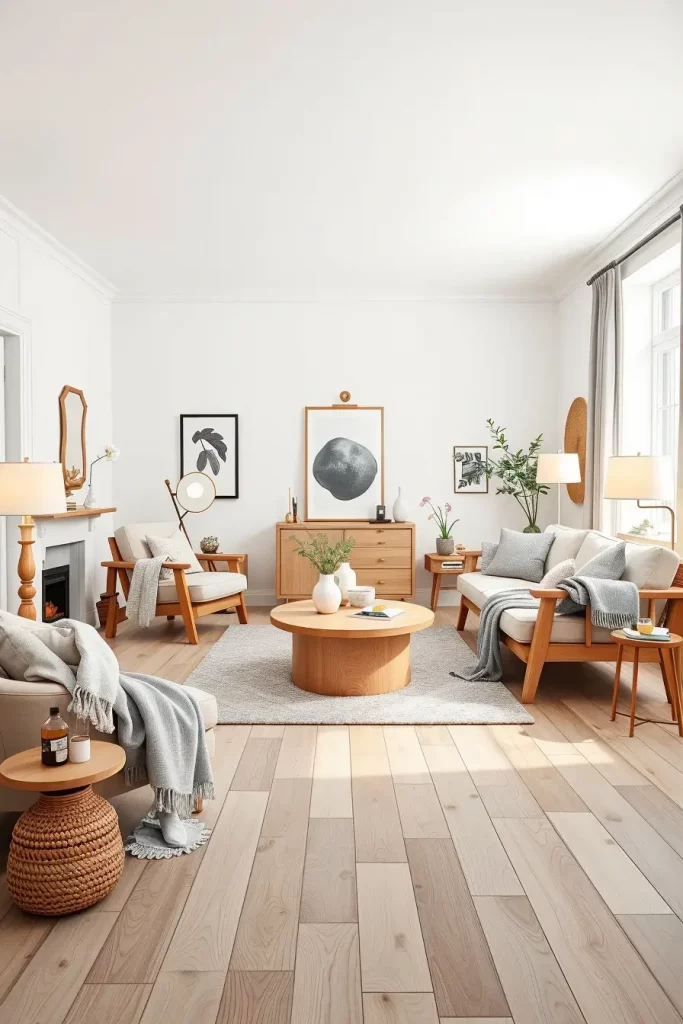
This style matches very well with contemporary life. The system seems to help people with children or long work hours who want a home that is calm and tidy. The New York Times Style Magazine recognizes that hygge is all about choosing comfort over appearance and I believe the same thing.
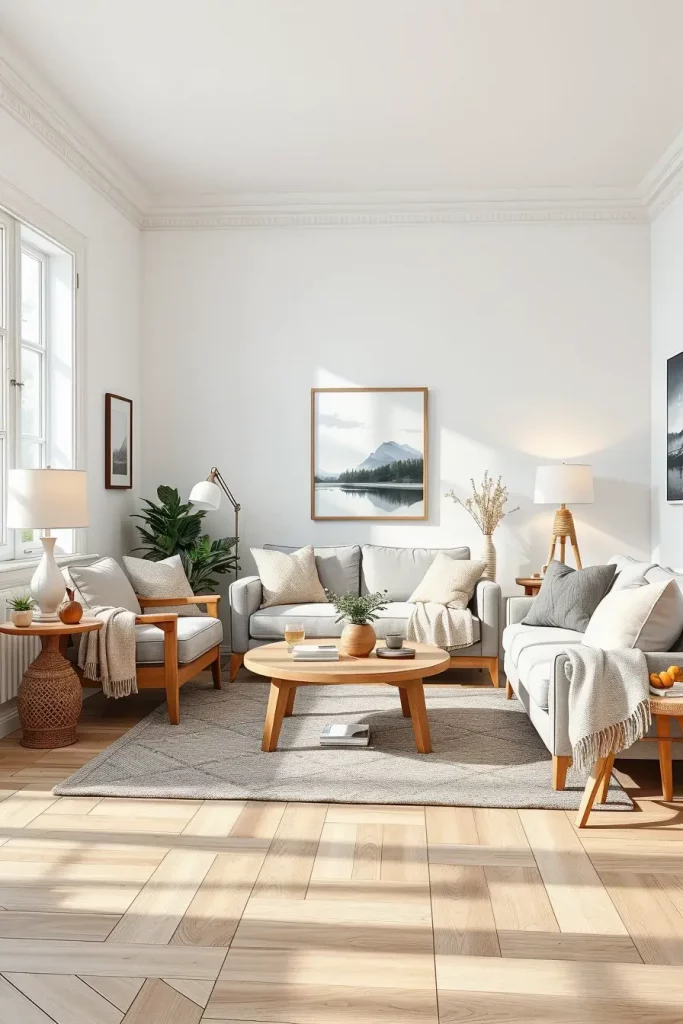
Another idea would be to add soft rugs, display fresh flowers and make a reading nook with a window bench here. These sprinkles of warmth don’t take away from how stylish the design looks.
Italian Elegance in Modern Villa Decor
The main features of Italian interiors are elegance, history and refinement. Wherever it pops up, the global decor style highlights the importance of lasting beauty and fine-quality workmanship. Pet owners who notice the beauty in architectural or well-made furniture will enjoy this.
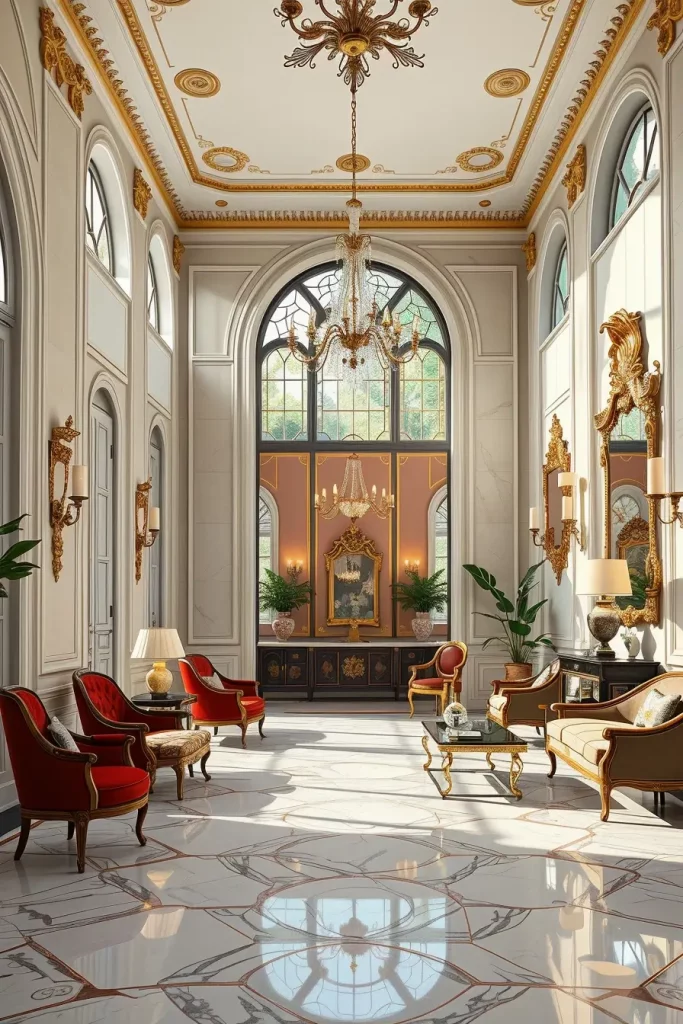
What I like most are marble floors, lovely arched windows and interesting statement lights. Sculpted chandeliers, plush armchairs upholstered in velvet and fancy mirrors are some of its features. You should definitely have a classic Italian sofa which is comfortable, short and upholstered in cream or taupe. Add old gold-framed pictures, Roman sculptures or dizzying ceramic urns to emphasize the room. Deep interest is added by wood beams or coffering in the ceiling.
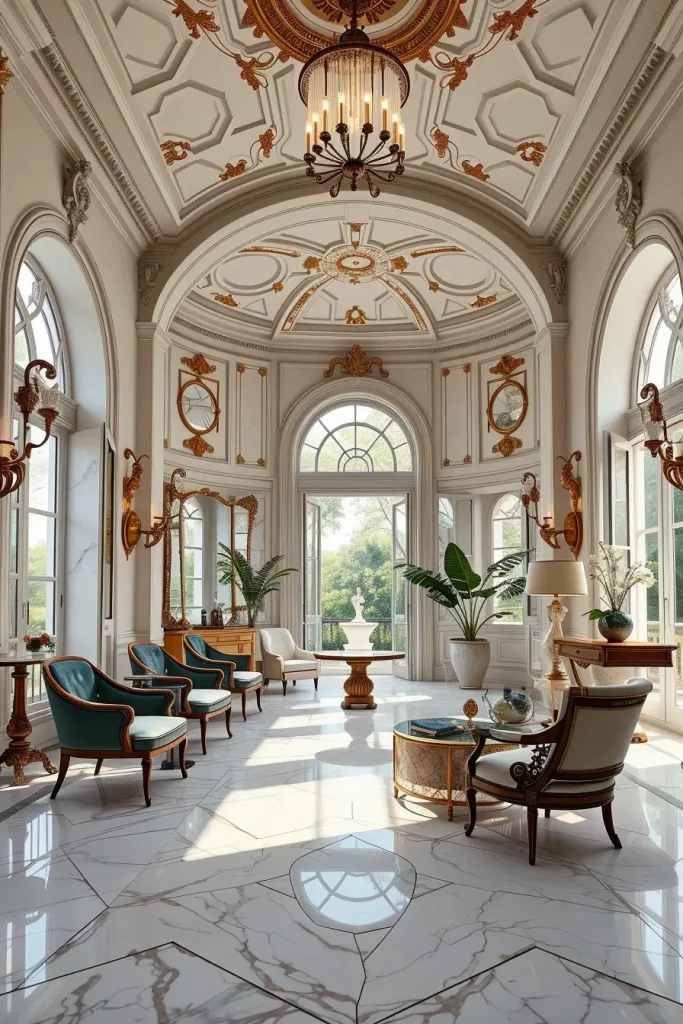
From Italian decor, I’ve learned that having luxury does not mean making things look cluttered. It means buying things that are made to last and are of strong quality. Elle Decor suggests that blending Italian classics and new designs keeps a room’s style modern and I try to follow this advice in my transitional projects.
For this section to have more detail, you may add stone stands, fancy moldings or a comfortable indoor olive tree. Any changes like these anchor the style to its culture.
French Provincial Chic With Antique Touches
Choose French Provincial decor if your dream style is a country-style romance. It includes rugged pieces, polished antiques and soft colors to make the rooms look great and cozy at once. Maintaining a balance between an old look and contemporary conveniences is the main point.
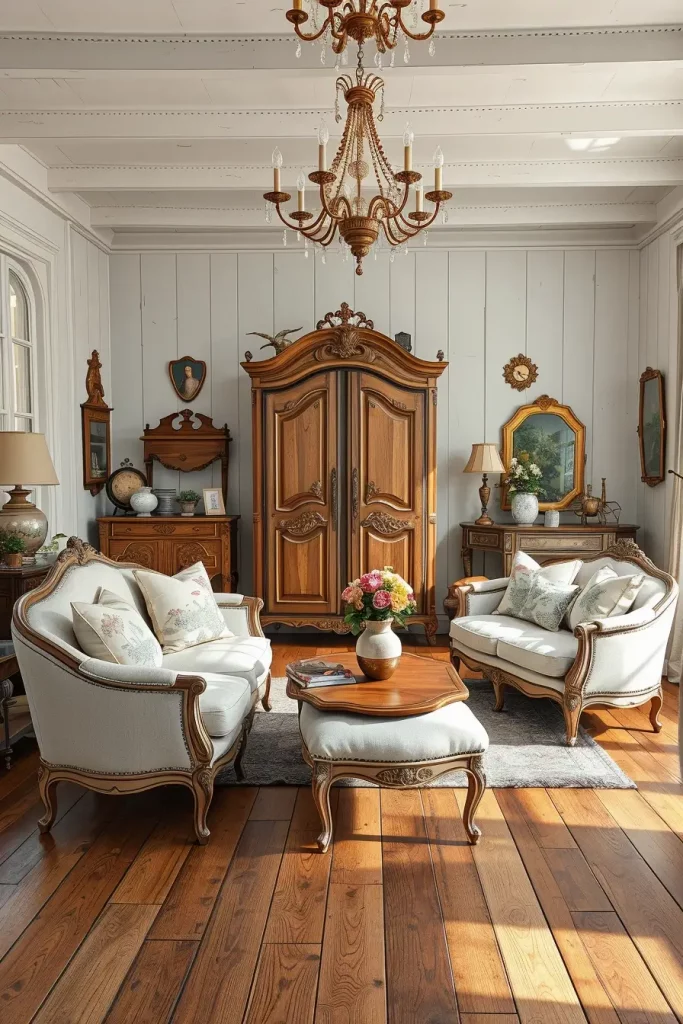
Distressed wood floors and soft white or beige walls are the first things I do. There are cabriole-leg chairs, armoires and linen-upholstered settees in the furnishings. Having flowers, patterns on fabric and embroidery on cushions makes things softer. The look is finished off by gilded mirrors, porcelain vases and chandeliers from the past. When the chairs at the farmhouse table are different, its style becomes more casual.

I once transformed a guest room by using items found at French flea markets and it looked wonderful. According to Veranda Magazine, the little imperfections make a room chic. I usually refer to this quote whenever I decorate with this style in mind.
I feel that the design would look better with lace curtains, some wall sconces made of iron and either a collection of old books or some copper cookware. In the end, these last sections add information without exaggerating.
Spanish Colonial Warmth for Timeless Interiors
Spanish Colonial homes are full of depth, different textures and a real sense of character. These rooms are earthy, connected to the ground and look as though they’ve always been this way, just reflecting global home decor tradition. If you have a family home or a rustic villa, this decor reflects the beauty of handcrafted items.
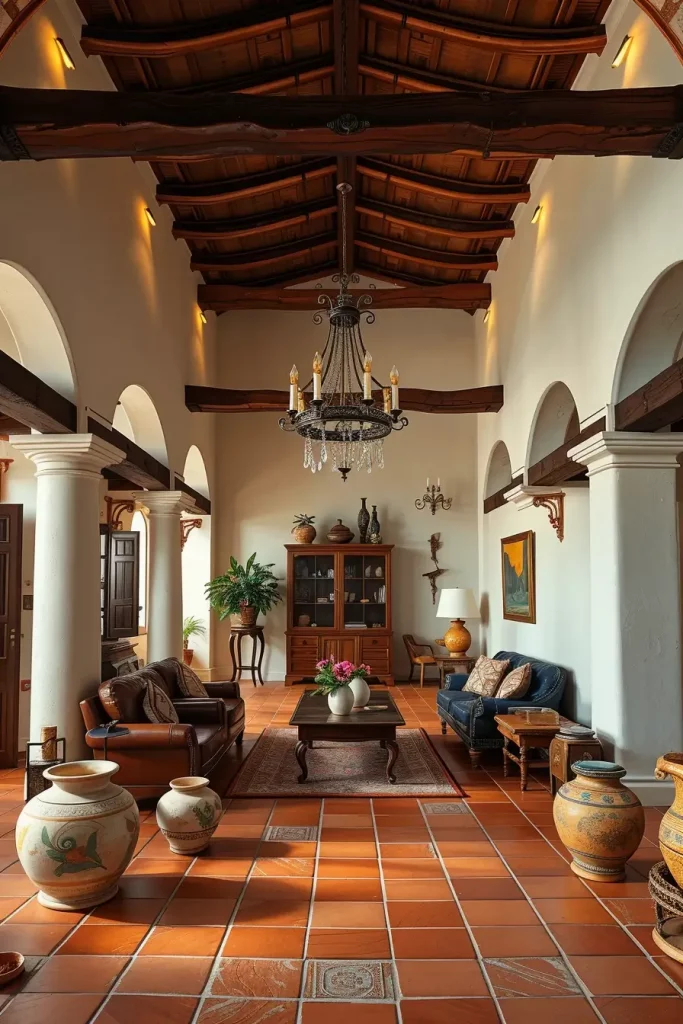
Most of the time, I use terracotta tile floor, textured plaster walls and dark wood beams. Wooden furniture, chandeliers with ornate iron designs and big fireplaces should be a part of every ranch style home. Leather armchairs, linen curtains and pottery that follows the colors burnt orange, mustard and deep brown are my favorites. Decorating using hand-painted tiles gives your home a unique handmade look.
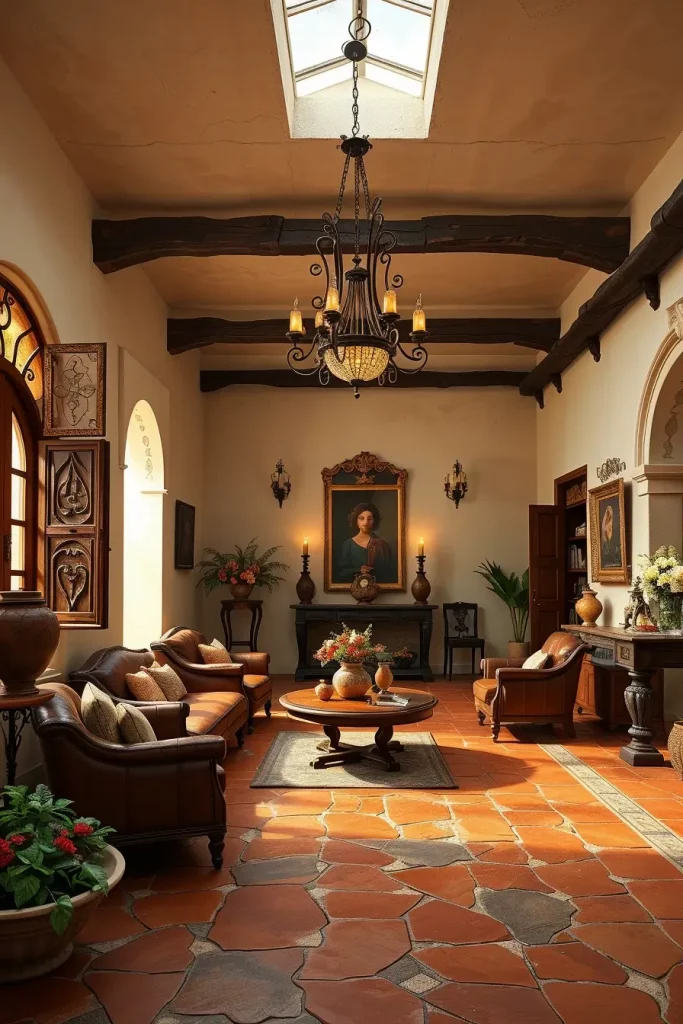
I think the way this style is written is both inviting and lasting. If the work is thought through properly, it doesn’t look old, it looks everlasting. The magazine says that bringing in layers of woven baskets, potted fruit trees and aged metals adds charm to the space and it works for me.
You can add more character by including a courtyard view, archways in the doors or patterned rugs that mirror tradition. What makes this style appealing is how exactly every detail is planned.
Indian Home Decor With Vibrant Color Stories
In India, interior design embraces colors, craftsmanship and religions. The international style in home decor is full of choices, ranging from the Mughal Palace splendor to the simplicity of earthy tribal style.
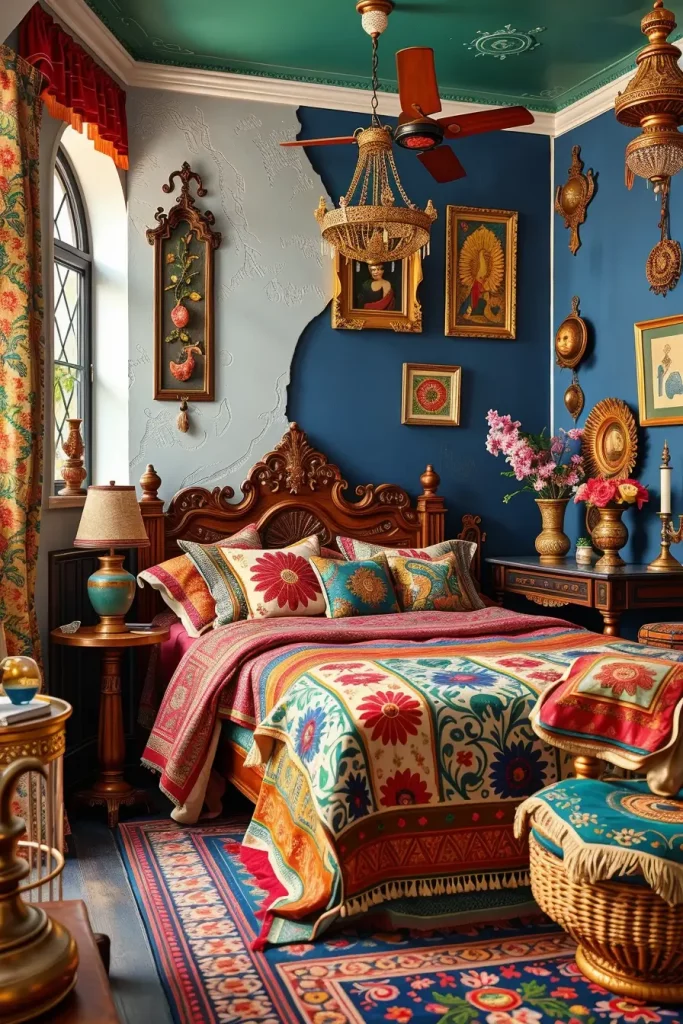
I decide to use bright textiles in this style, like kantha quilts, block-printed fabrics and silk curtains. The furniture used here is defined by carved beds from wood, brass trays and sideboards painted in different styles. I like to have marigolds, lanterns and incense holders in my altar. A wall painted in indigo, mustard or coral color helps draw the whole room together.

In my opinion, a strong focus on a few Indian details lets you balance the design of the space nicely. Better Homes & Gardens suggests handloom fabrics and block prints are authentic and work well together which I take advantage of when adding layers to my outfits.
One more way to improve this area is to include a low seating spot with floor cushions, mango wood tables and some hand-painted ceramics. It creates a cosy and settled atmosphere.
Middle Eastern Majesty With Ornate Details
The Middle Eastern style is famous for its opulent look and connection to cultural customs in the world of home decor. This style would appeal to anyone who prefers luxurious materials, fine workmanship and homely areas. Geometric designs, ornate tiling and gold accents are some of the things that make Middle Eastern homes special.
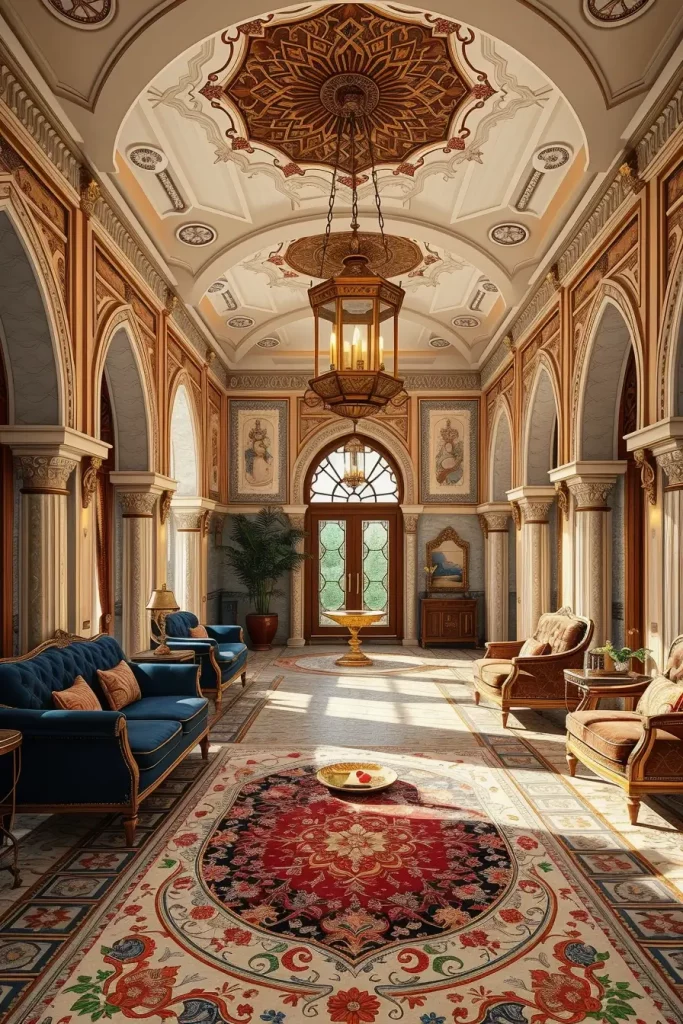
First, I place mosaic stones on the floors, add arched door frames and add much detail to the walls. Especially, the soft seating should be plush, deep and covered with velvet. I prefer to put in lantern chandeliers, gold side tables and Persian rugs in my designs. Using mashrabiya screens, handsome embossed metal trays and written artworks can make the dining area more stylish.
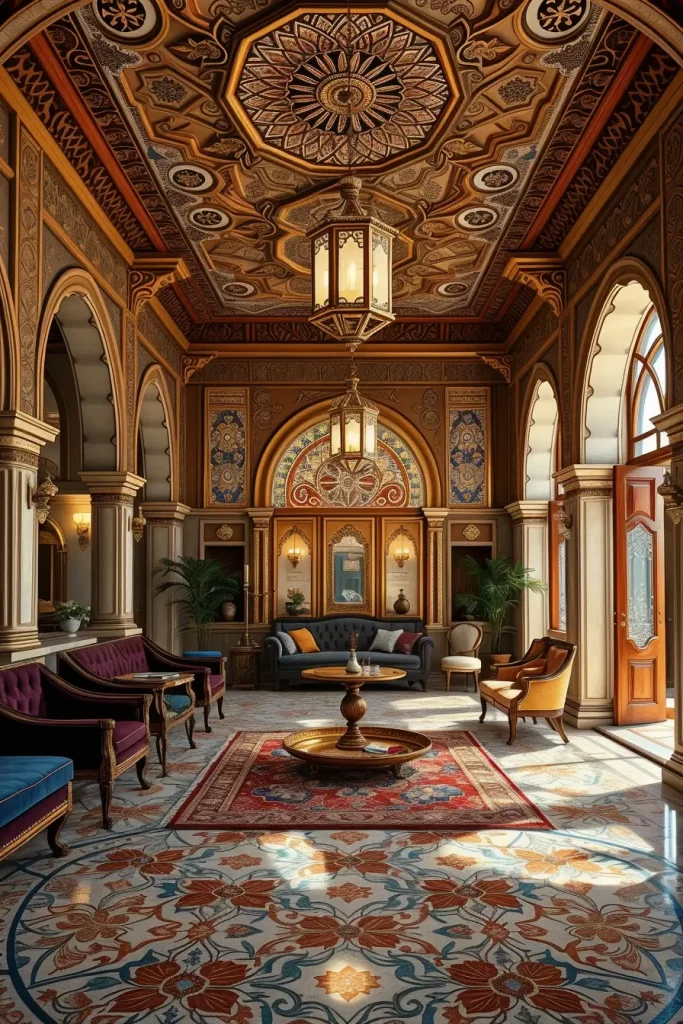
I enjoy setting up ambient lighting by mixing overhead fixtures, fixtures on the walls and lights on the floor. Architectural Digest mentions that designer styles from the Middle East are now using mild colors but do not lose their ornate appeal which blends beautifully with the look of today’s homes.
I believe carved wooden ceilings, fountains made with tiles or inlays with mother-of-pearl will make the design even better. Because of these elements, the culture is rich, feeling old and constantly relevant.
African Tribal Motifs and Natural Textures
African decor features items that are natural, earthy and meaningful. This type of home decor benefits from many generations of artisans and values a strong link with the environment. I take inspiration from this style when I hope to make a space lively and warm. It’s particularly effective in living rooms, studies, and outdoor lounges.
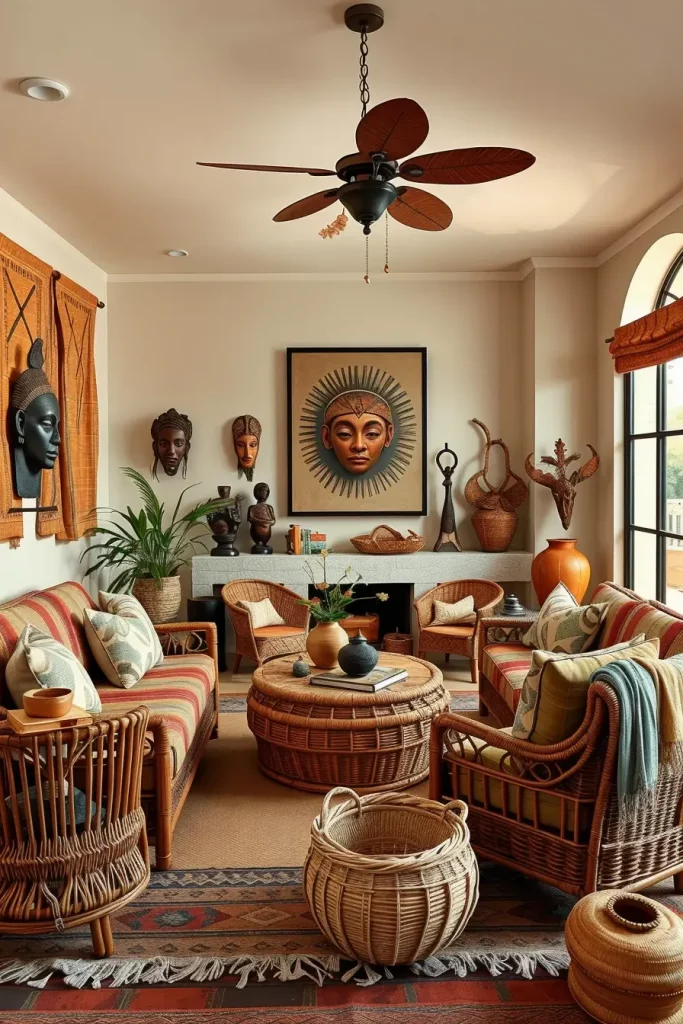
My way of highlighting this look is to use mudcloth or kuba fabric for upholstery or wall hangings. Texture comes from rattan furniture, natural wooden stools, weaved baskets and rugs made from fiber. Masks, figurines and ceramic items that are sculpted by hand contribute to the genuine feel. For me, ochre, burnt orange, charcoal and cream are the most attractive earthy colors.
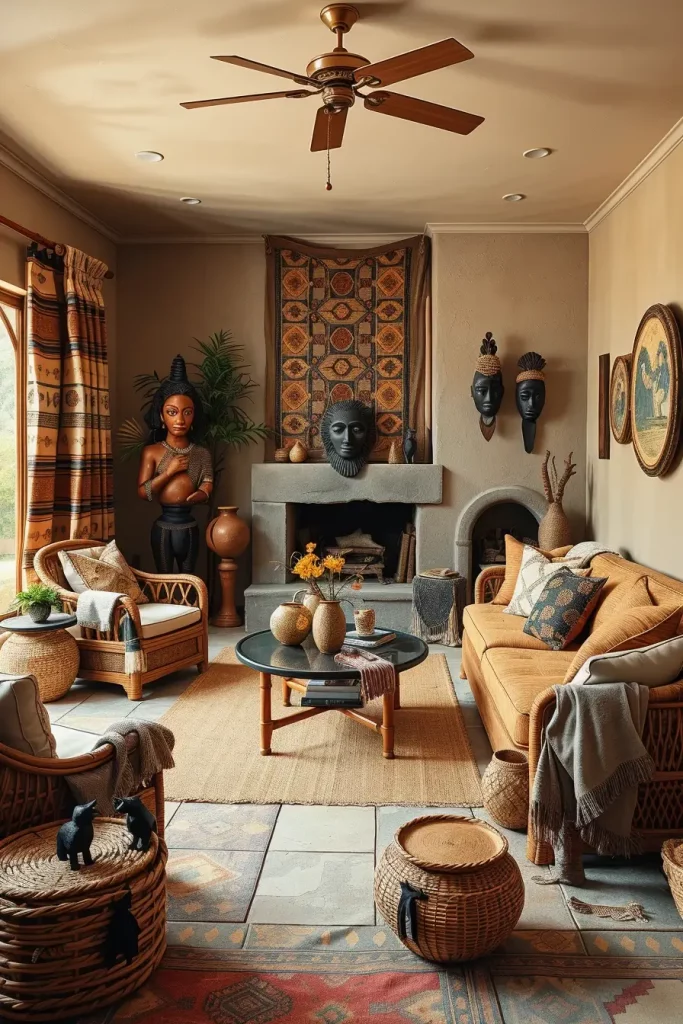
From Domino Magazine, I’ve learned that it’s best to use bold items only occasionally, making them stand out in the room. I zero in on one reference to the tribe and use that to shape my story. This way, the overall piece looks like a perfectly fitting ensemble.
An effective way to improve the design is to include live edge furniture, side tables that are drum-shaped or cowhide rugs. When introducing these items, the space takes on an African feel and displays the texture that is special to their interiors.
Balinese Serenity in Tropical Home Design
Balinese style focuses on soothing calmness, well-balanced looks and linking the home’s indoors with the outdoors. Bali-inspired world decor starts on the Indonesian island of Bali and stresses the idea of well-being with natural elements and spiritual peace. I think it’s perfect for use in sunrooms, as part of wellness interiors or for any tropical-inspired vacation place.

At first, I suggest using bamboo and teak wood furniture, gauzy white curtains and airy room designs. Beautiful views of greenery are made possible through large glass doors that are easy to open from within. Canopy beds, stone artwork and panels made from carved wood give the place a spiritual presence. I complete the room with lots of greenery, jute carpets and fountains on the tables.
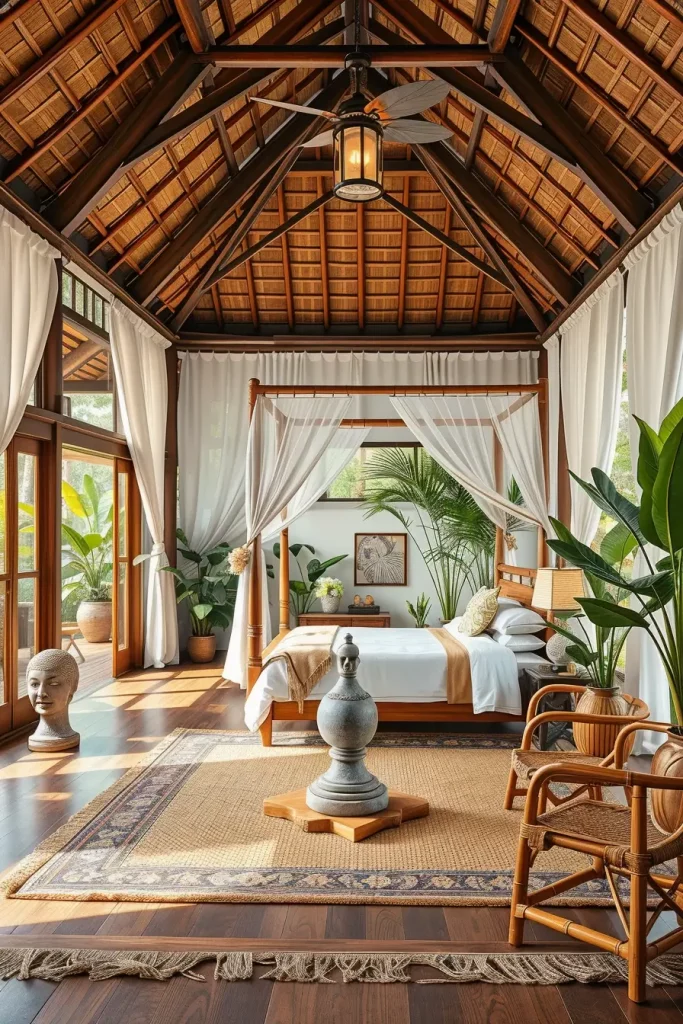
I always find that simplicity plays a key role in strong design. Having stones or statues at the center of the space and seating around them, helps direct thoughts towards mindfulness. The magazine suggests getting handmade lamps or decorative mirrors and I feel these local items make any place look genuine and are also eco-friendly.
To add more inspiration, you could set up an outdoor shower, use river rocks for walkways or make a semi-opaque partition from bamboo to mark the area while keeping it open.
Greek Island Interiors With White and Blue Themes
Greek décor is famous for being clear, clean, striking and beautiful. The blue and white color combination stands for the islands and brings to mind feelings of freshness and clarity. Such a style works well for coastal homes, rentals or any room in need of a fresh and appealing environment.
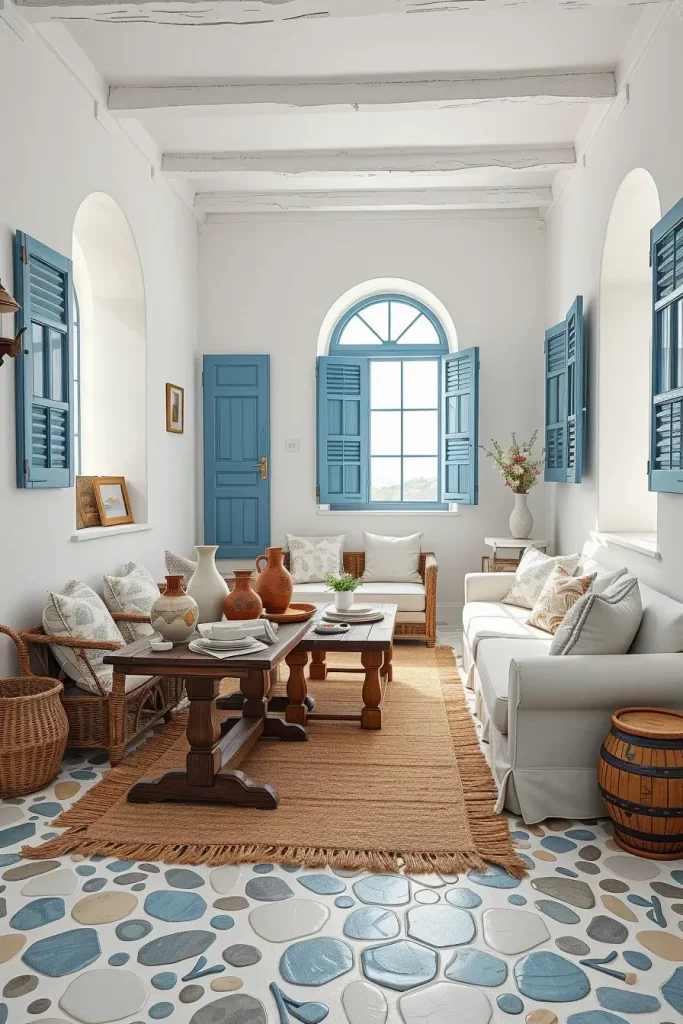
The first step for this look is to choose whitewashed walls, stone or concrete floors and arched windows. Using slipcovered sofas in white, wooden tables and jugs as ornaments is my favorite. The main accent is deep blue which appears in the tiles, shutters and throw pillows. Coastal style is added through details and materials like rope or linen.

I really enjoy the way this design brings out excitement. Better Homes & Gardens likes the idea of using products inspired by nature, like sea grass rugs and olive branches, to bring realism to a coastal look. As a result, the room remains open and stays classic.
I’d finish the design with a banquette in blue, some mosaic tiles or classic Greek pottery to bring the cultural touch.
British Cottagecore With Rustic Accents
This British style brings back rural life mixed with warmth and retro style. This global home decor style embraces cozy layers, floral fabrics, and a sense of nostalgia that’s incredibly appealing in today’s fast-paced world. I regularly decorate bedrooms, quiet areas or modest kitchens in this manner which makes them appear more intimate and connected to those living in them.
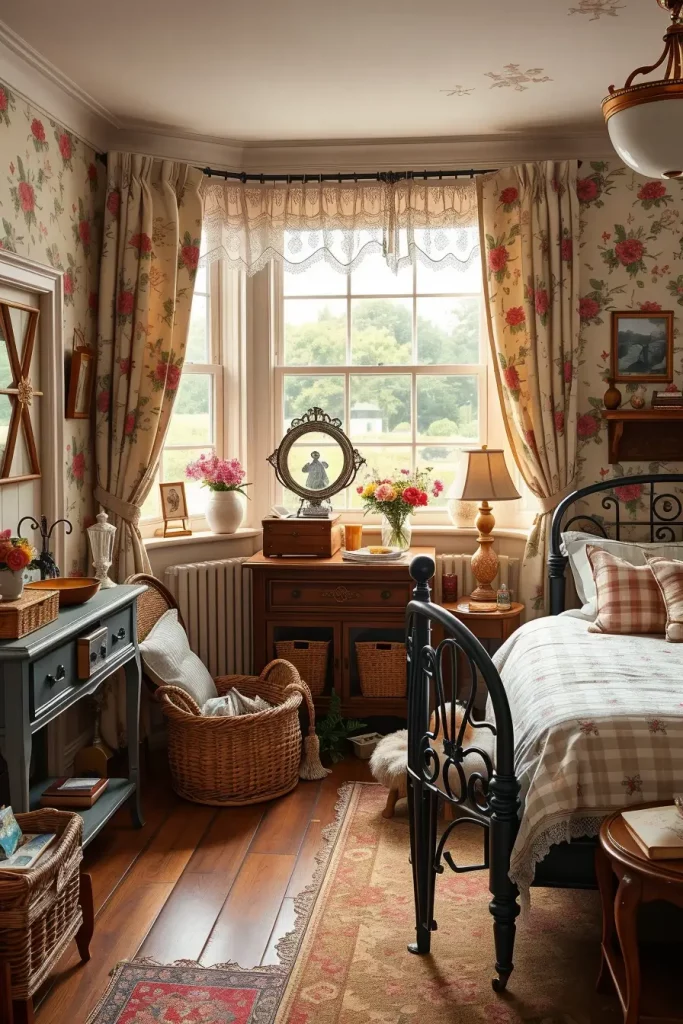
Some of the things I add are exposed beams, checkered linens and floral wallpapers. The whimsical touch comes from furniture made of wood, baskets made of wicker and beds made of cast iron. With tea sets, lace doilies and botanical prints, the look is brought together perfectly. It’s necessary to make sure the setting is natural, without making it seem too unrealistic.
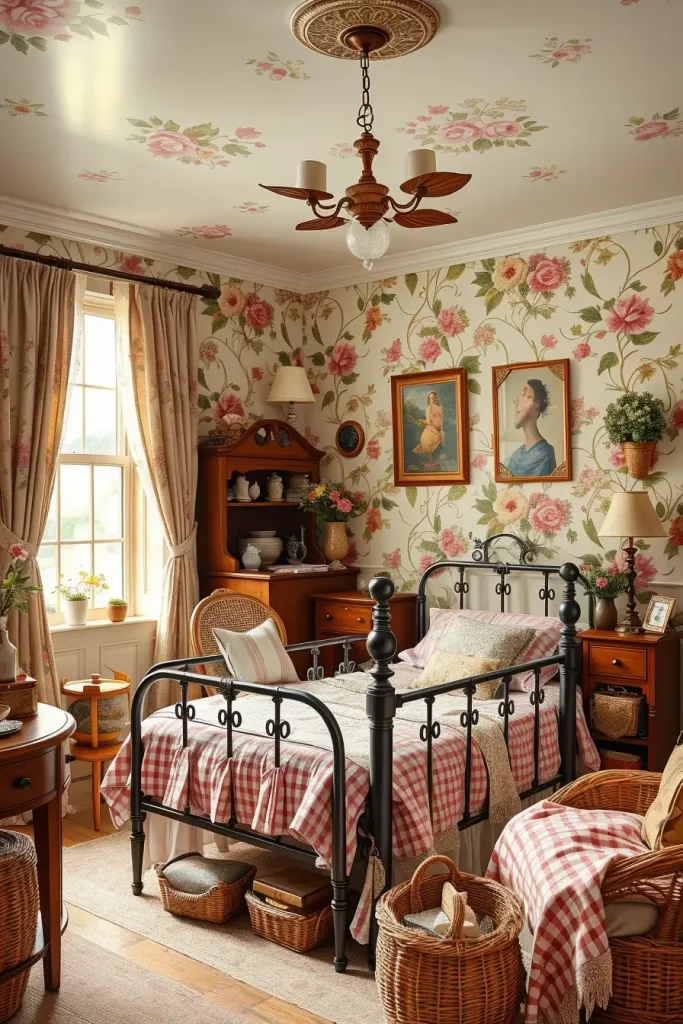
Country Living tells us that the soul of a cottage is revealed through its quirks and unfinished aspects. I’ve found that using mismatched furniture and repurposed décor brings personality and comfort to the design.
Window seats, vintage shelving with lovely dishes or a flower-painted armoire could all make the kitchen stand out more. Additional features inspire storytelling and give more variety to the background.
American Farmhouse Style With Global Blends
Recently, the American farmhouse style has included elements from different cultures while still keeping its original style. A global home decor style is simple, cozy and can be changed to fit any home. It isn’t a bad choice for anyone aiming for comfortable and culturally inspired home decor.
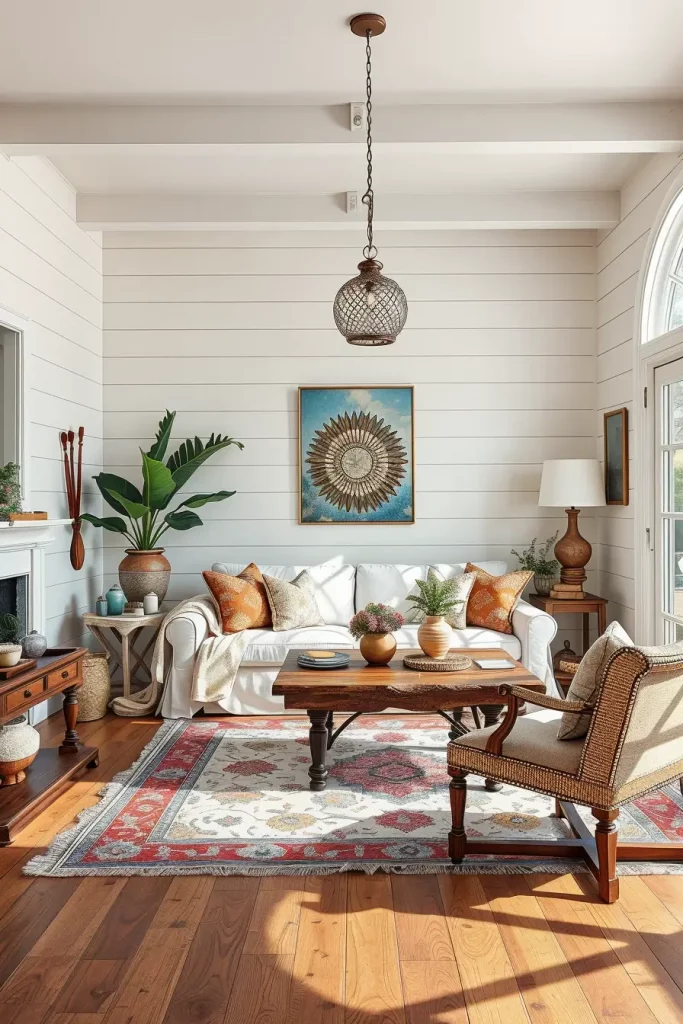
The first step is to create shiplap walls, choose hardwood or barn-style lighting and hardwood floors. Place Moroccan rugs, ceramics from Japan and Indian kantha throws among your furniture. Choose to have large and comfy items, like slipcovered sofas, eating tables made of wood and pendant lights made from metal or ceramic. Have the colors mainly neutral with some splashes of black, sage or navy.
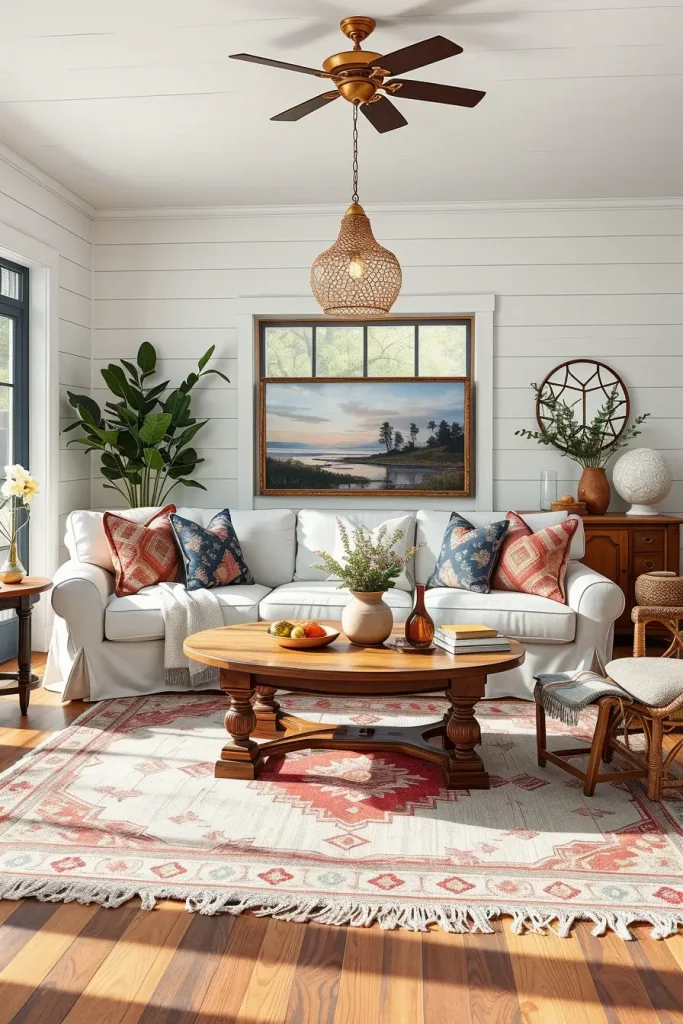
I think using farmhouse ideas along with international accessories helps bring out an interesting style that never feels unstable. According to HGTV, the modern farmhouse is really meant to offer a touch of comfort with a new twist which is something I usually keep in mind.
Furthermore, putting in globe antiques, travel pictures from around the world or pottery made by hand might look good here. They give a personal touch and extra appeal to an already beloved style.
Korean Hanok Inspiration With Modern Twist
What stands out to me about traditional Korean Hanok homes is how the space inside and the nature outside are made to go well together. It looks very nice when applied in a modern way to today’s interior designs. The addition of sliding wooden doors, open spaces and low furniture gives the home a pleasant and helpful design.

I use pale oak floors, shoji-style doors and wooden beams as the basic elements for this style. Furnishings are set low: for example, platform beds, simple and slim floor cushions and lacquered tables. The look is improved by using only a few colors, lots of light from outside, lanterns for lighting and pottery as part of the furniture.
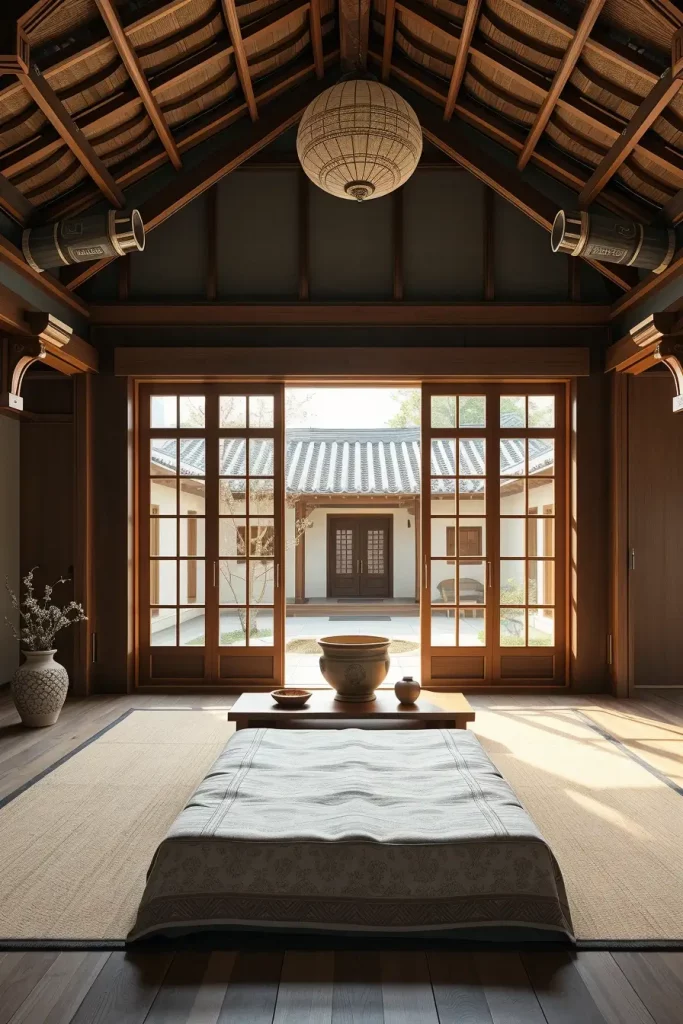
I have discovered that people who want a calm and peaceful atmosphere usually enjoy Hanok-inspired spaces. As suggested by Architectural Digest, the clean and spiritual design from Korea is a natural fit for contemporary city homes, especially found in relaxation spaces.
What I would add to complete this style is underfloor heating (ondol-style), which pays tribute to traditional Korean warmth and enhances the comfort of low furniture.
Turkish Decor With Intricate Patterns and Textiles
The Turkish style is rich in handmade crafts and offers warm hospitality to everyone. It helps me to start the design process with rich pieces such as colorful rugs, polished carved wooden furniture and statement tile. As a result, the interior is both elegant and cozy at the same moment. The main idea is to mix difficulty with coziness.
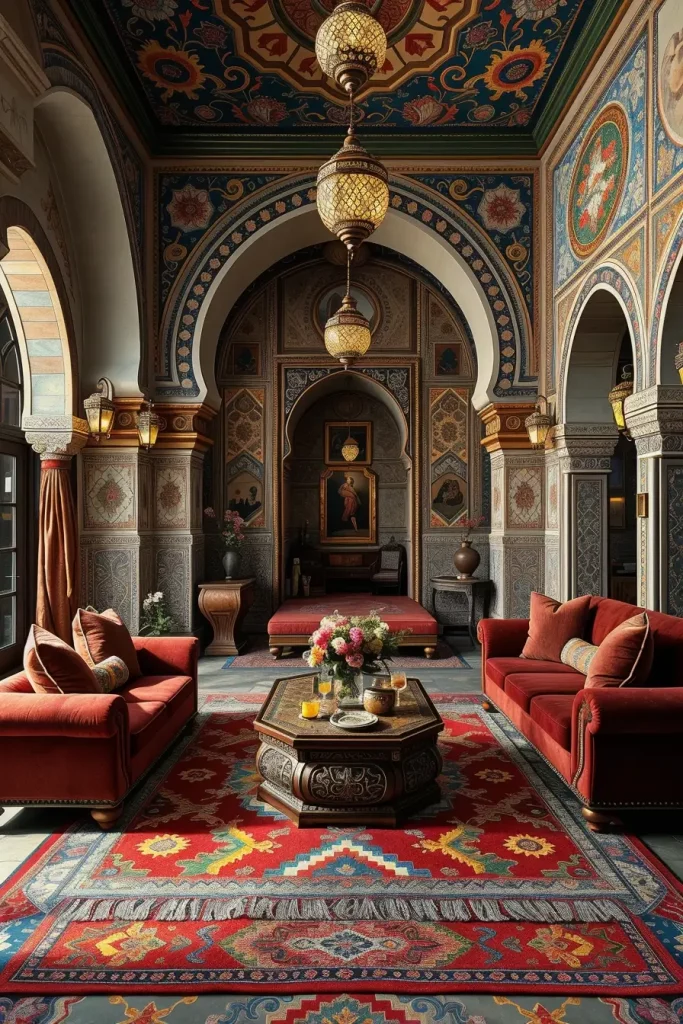
Color is one of the parts of Van Gogh’s work that I particularly appreciate. Decorative pieces in your home may be found with these jewel tones, for example, embroidered pillows in deep sapphire, ruby mosaic lamps and surface-decorated ceramics in emerald. Soft furnishings with velvet upholstery and distinctive tables decorated with mother-of-pearl are what you will find. Tiles placed on an accent wall or the steps of the stairs make the space look amazing.
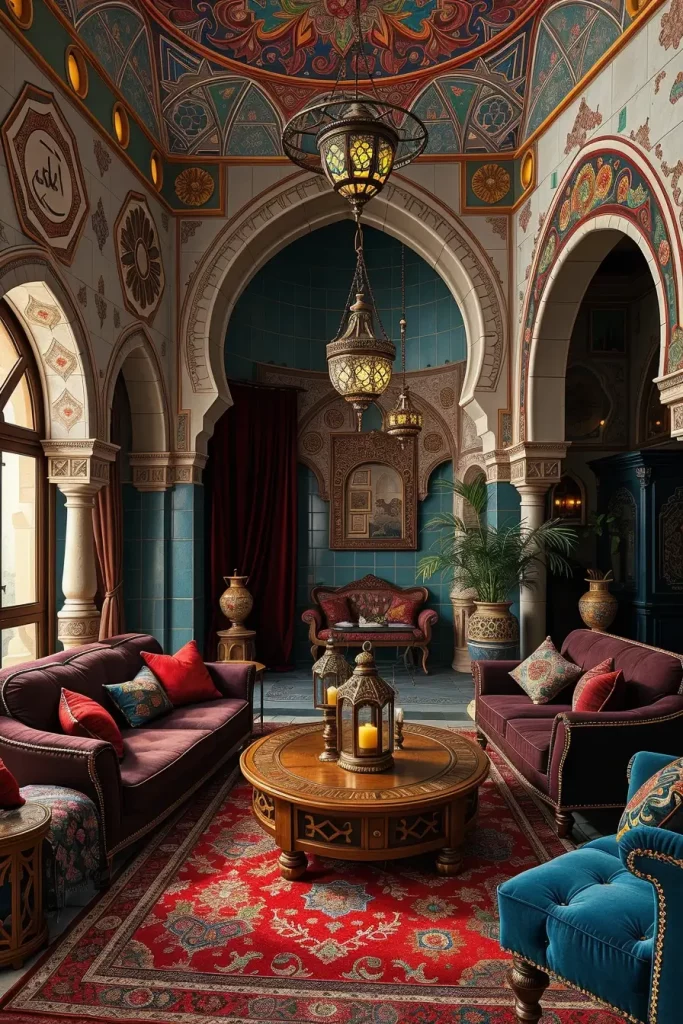
Often, I tell my clients that furniture from Turkey is perfect for enclosed areas like dens, lounges or dining spaces you want people to enjoy staying in. Elle Decor states that the country’s strong tradition of craftsmanship keeps inspiring decorators all around the globe.
I recommend putting in hanging lantern groups and arched sections specially for showing pottery to give the space a cozier and more impressive atmosphere.
Chinese Feng Shui-Inspired Home Spaces
Design that supports well-being is very important to me and Chinese Feng Shui focuses just on those concepts. While designing, I focus on highlighting nature, making things symmetrical and maintaining simplicity. In Feng Shui, we are guided to observe air, light and objects in our space as a single unit.
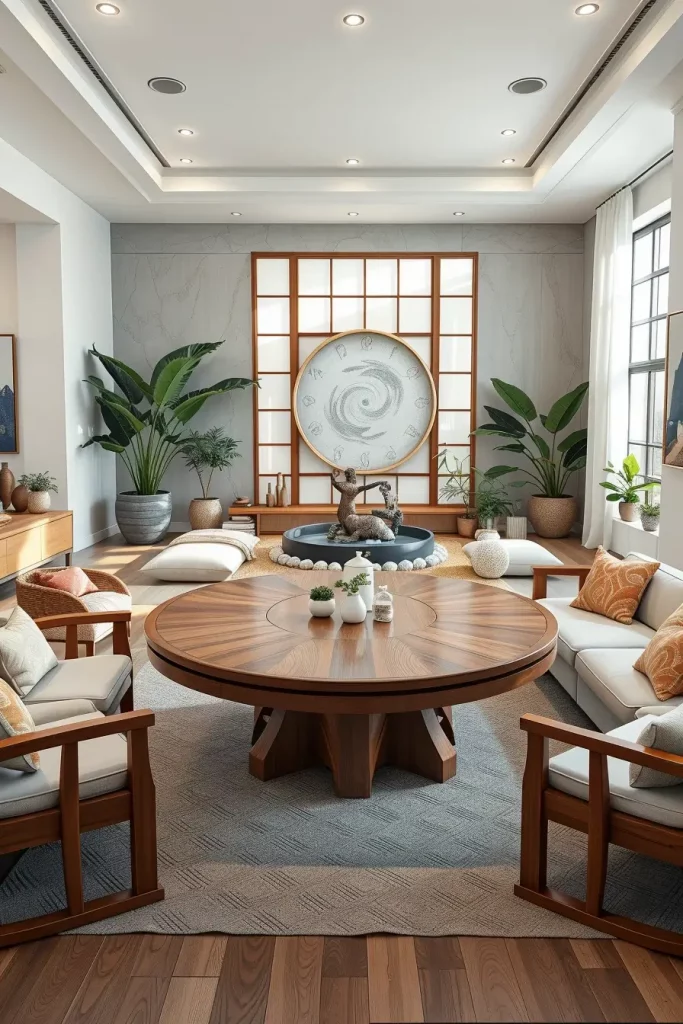
Choosing what furniture to include is thought out. For the right blend, I put circular tables, sofas near open areas and decorate them evenly in each space. Wood, stone and water add the five elements to your design. Green is used in offices, red is found in social rooms and white decorates bedrooms to reflect their corresponding themes.

This approach isn’t just spiritual—it’s also practical. HGTV suggests following Feng Shui to improve air and space in small urban places. I’ve used them to reimagine apartments and compact homes with great success.
The use of well-concealed storage solutions could keep the space tidy and practical at the same time.
Australian Coastal Decor With Open Spaces
Being located by the sea influences Australian homes to be light, inviting and very calm. While imitating the style, I concentrate on using natural light, using neutral colors and selecting materials such as linen and jute. Spacey, joined-up rooms and oversized windows help the outdoors look as if it is part of the interior.
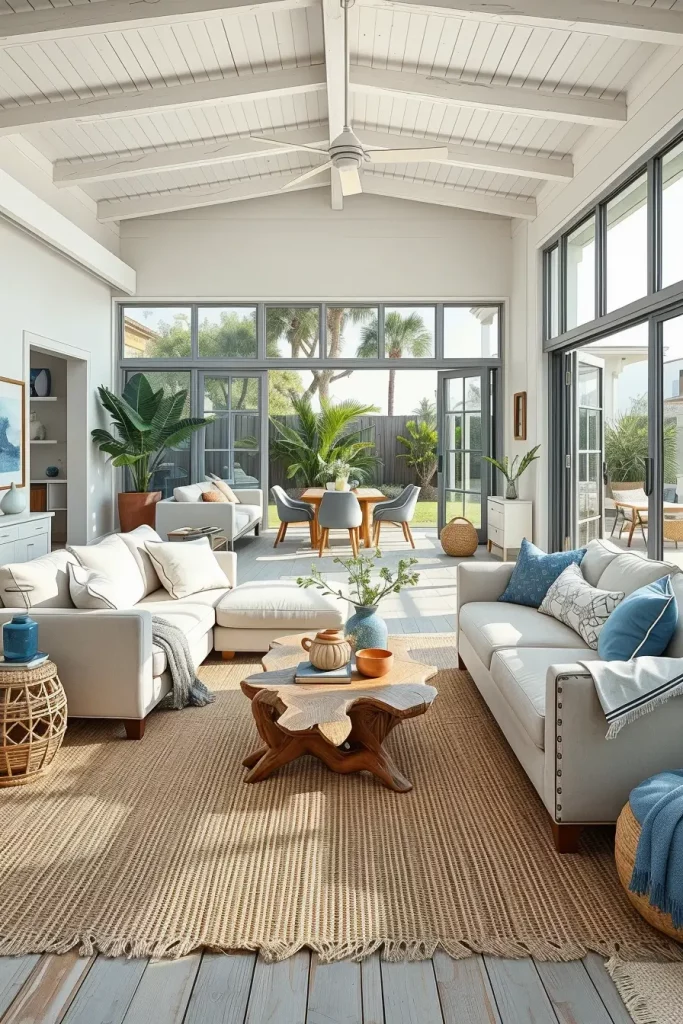
I buy quite casual and handpicked pieces such as large, comfortable sofas, tables of natural wood and light fixtures with braided shades. Darker woods, driftwood items and pottery with sea themes give the place a balanced look. The use of light blue or seafoam green makes a room more tranquil.
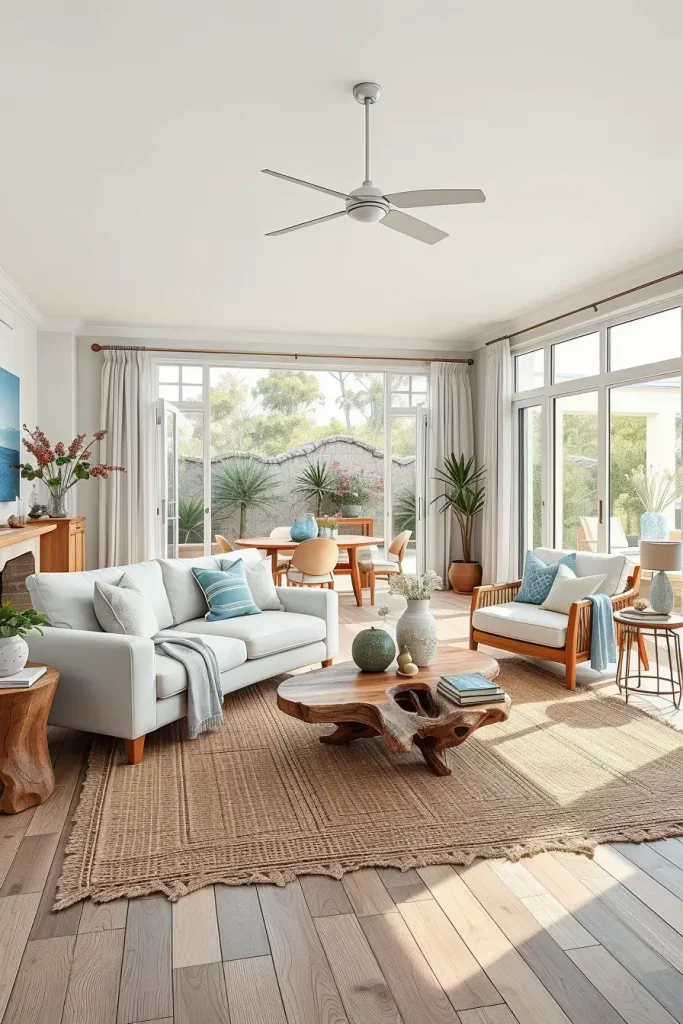
It works best in today’s modern homes that are designed for a cheerful and refreshing look. In Real Living Australia, using neutrals together with soft and smooth materials helps make a room look coastal without forcing the look.
I would include a well-connected covered patio in this space, equipped with easy-going rattan chairs and beautiful eucalyptus pots.
Brazilian Modernism With Bold Geometry
Brazilian modernism is a style that I love to use in my designs—it shows up daringly, is quite artistic and builds its confidence into every line. Based on the mid-century time period, it mixes simple lines, plain concrete and colorful geometric shapes. The foundation of every design is an open, sculptural and bright floorplan.
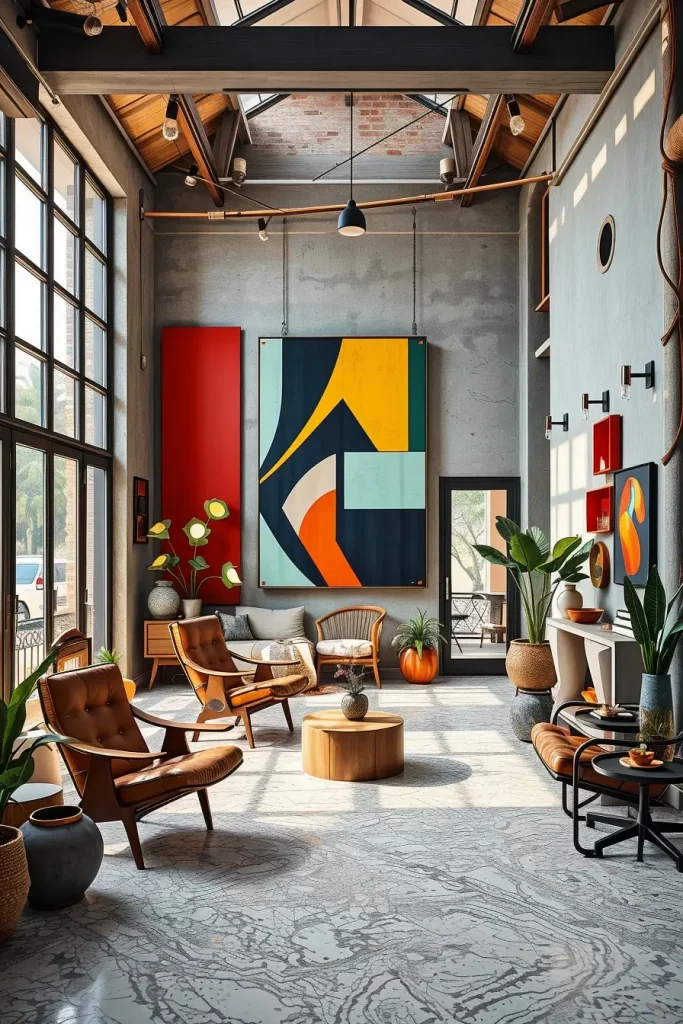
Sleek hardwood chairs, leather sling seats and big abstract pictures appeal to me in my house. Exciting bursts of cobalt blue, tangerine or mustard yellow stand out in front of the serious architecture. Brazilian rosewood tables and terrazzo floors mark the kitchen with special style.
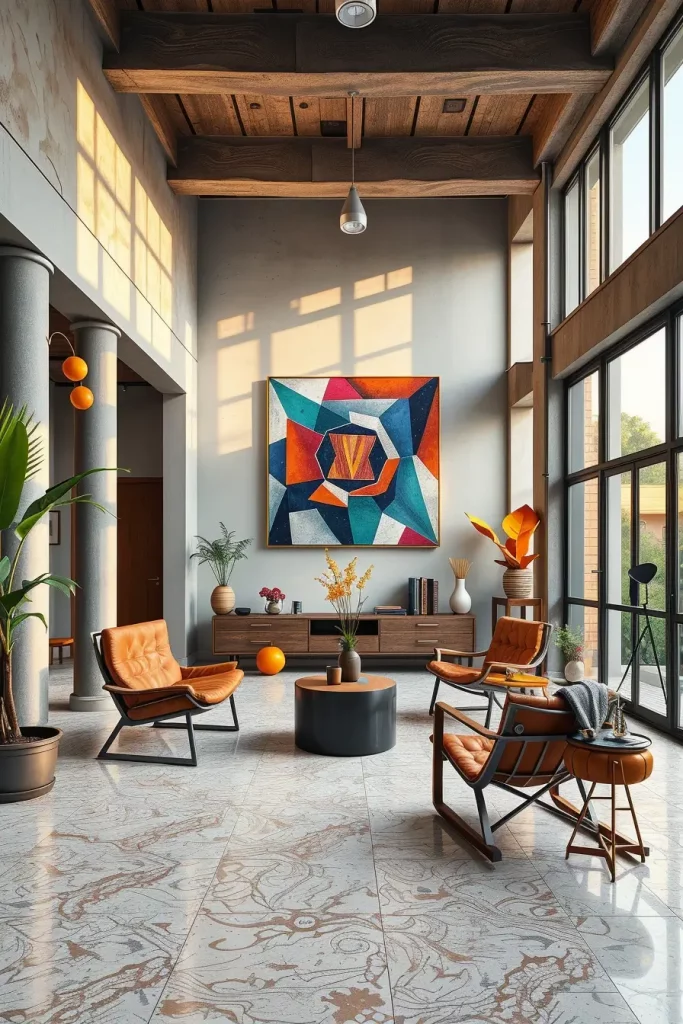
For Dwell Magazine, Brazilian modernism at the same time aims for practical use and expresses a strong connection to the nation. I think this style suits lofts and work spaces that are modern and artistic.
Bringing in Monstera or Snake Plant from Brazil would display the connection between city design and greenery.
Mexican Hacienda Aesthetic With Bold Tones
The Mexican Hacienda style is known for its lively colors, romance and close relationship with making crafts. Every décor begins with an arched doorway, terracotta tiles and colorful walls such as coral, mustard or turquoise. Houses commonly center on a central courtyard or indoor area meant to bring people together in a friendly way.
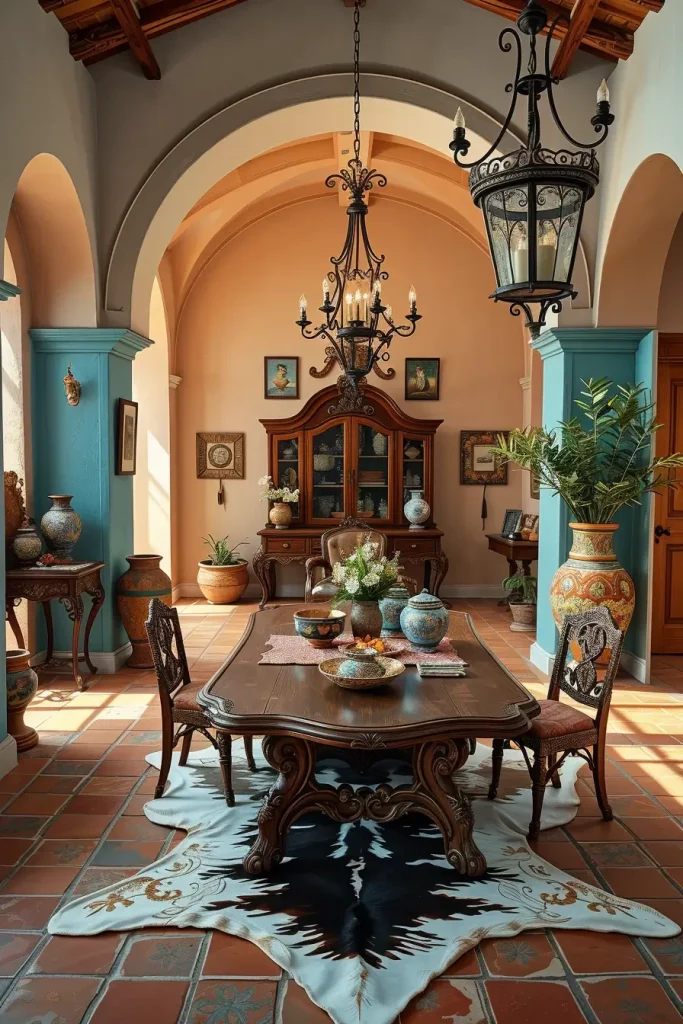
A lot of the furniture resembles village life, with wood-carved tables, iron-forged beds and painted tiles in staircases and around the kitchen. I also include Talavera pottery, woven coverings and cowhide accessories in my interior to make it more authentic.
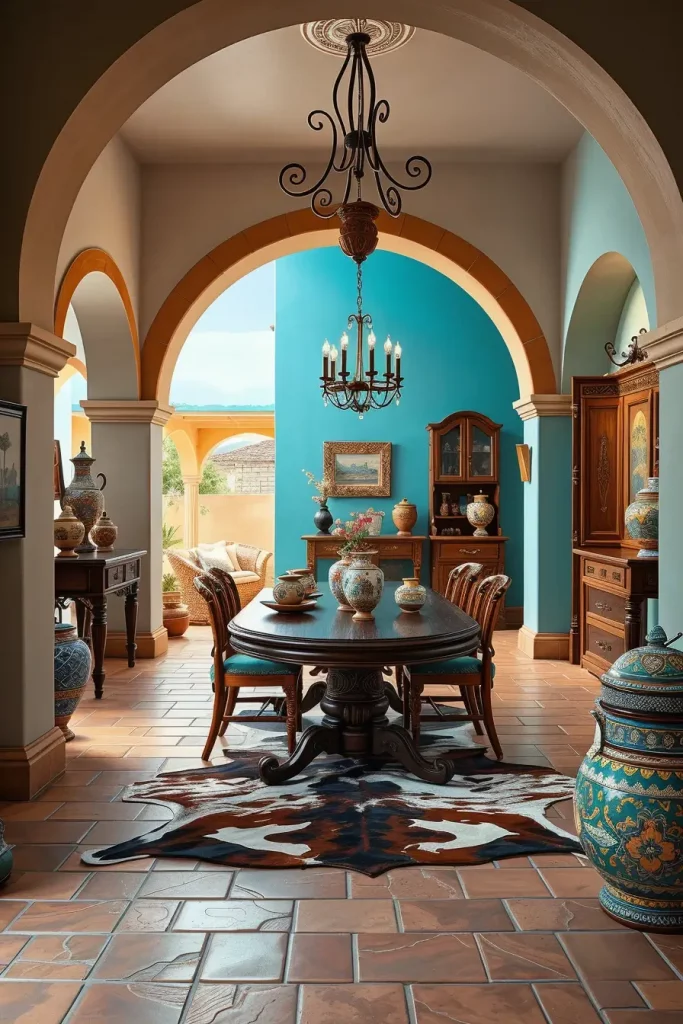
I find that this style really brings out someone’s individuality. Better Homes & Gardens believes that bold colors and unique goods from artisans illustrate both culture and friendly practices for the environment. I usually recommend choosing this theme for family houses or holiday properties.
I would put in an indoor fountain or a tiled fireplace to make the room a place friends and family can gather together.
Nordic Rustic Meets Modern Global Style
What makes the Nordic rustic style special is that it is both held back and inviting and this mixes in well with modern worldly pieces. While designing this style, I prefer bare (neutral) colors, real materials and a thoughtful amount of details. The end product is a harmonious area that continues to welcome people in.
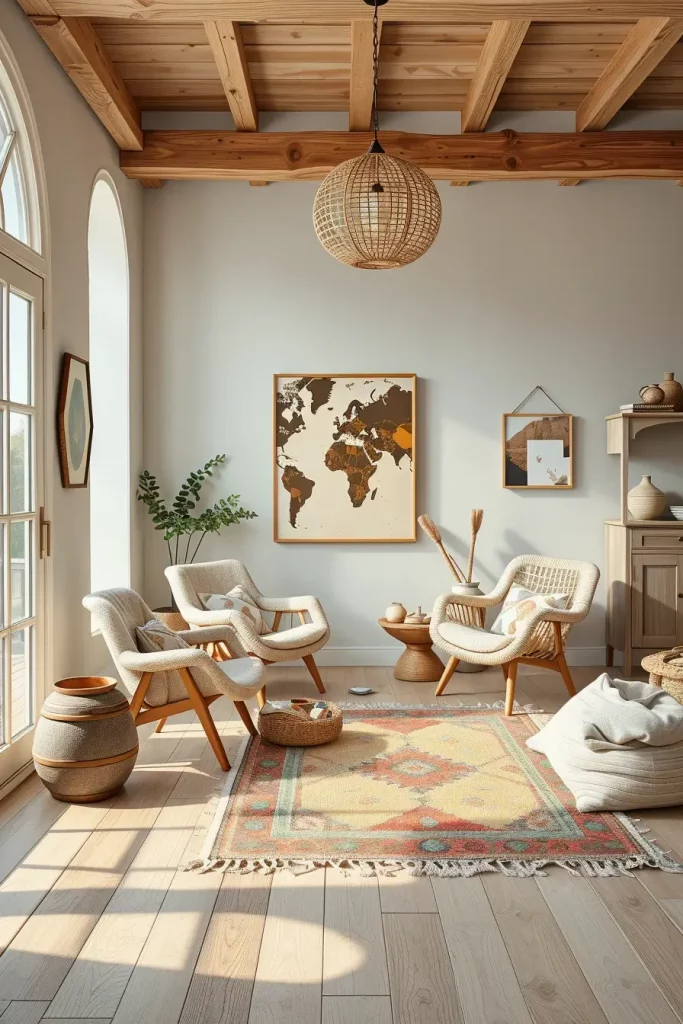
Some of the pieces of furniture I have are light wood dining tables, chairs covered in wool and benches with sheepskin throws. I use different global pieces such as Moroccan rugs, Japanese ceramics or African art to make the area look full but not crowded. The mood is calm, contains many layers and is refined.
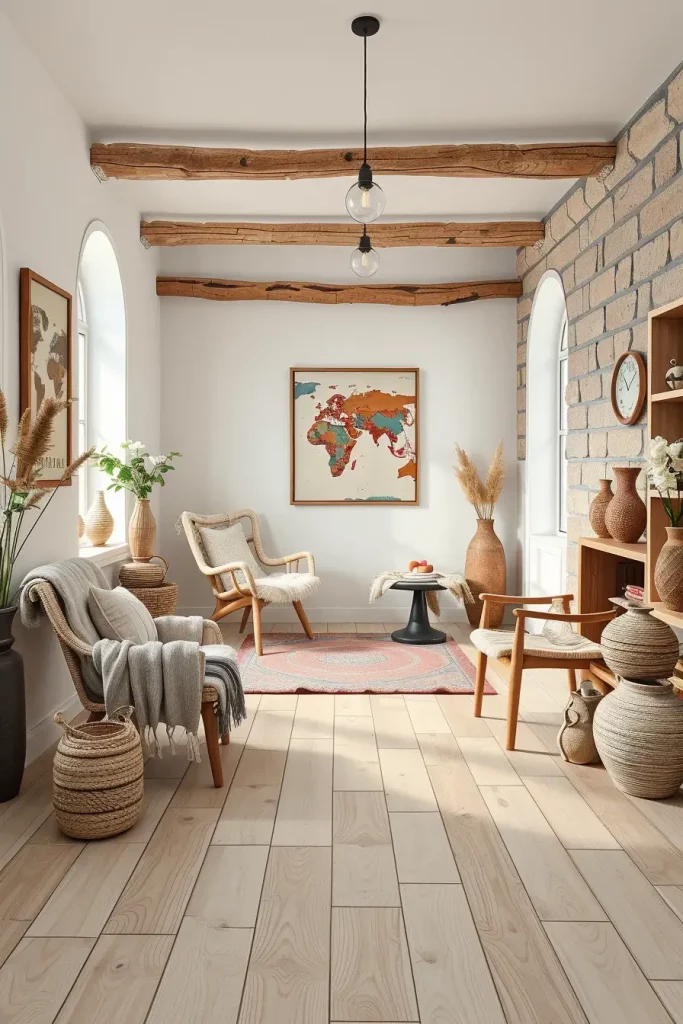
It suits those who enjoy Scandinavian styles but want to bring their own touch to the place by adding stories. Domino Magazine proposes adding heirlooms among pieces that have clear, sharp lines to create a harmonious look.
I’d finish the scheme by hanging a sculptural wooden mirror or textured clay artwork on the wall to match the subtle and striking atmosphere.
South African Safari Themes in Urban Decor
South African safari-inspired rooms always make me picture rough surfaces, earth-colored hues and a strong link with nature. In urban locations, this look adjusts easily and creates a solid sense of enjoyment. First, I use shades of beige, deep brown and olive green to form a relaxing base before I add thick textures and tribal details over it.
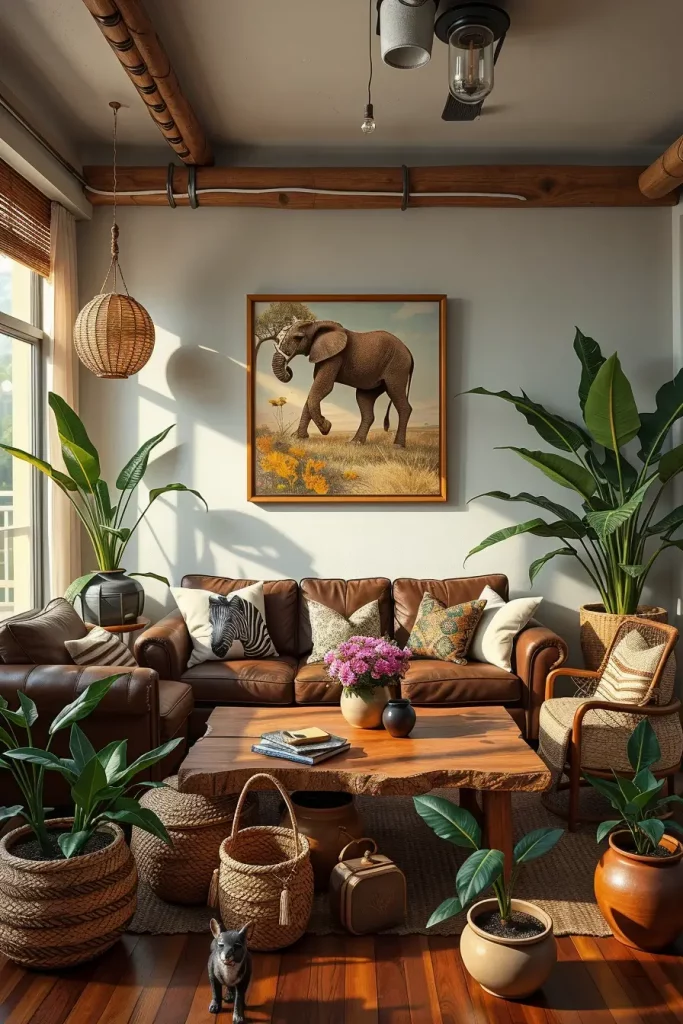
In my design I incorporate leather seating, baskets and textiles with animal prints, especially zebra and cheetah patterns on items such as throws and cushions. Usually, walls have common African artwork and the place also has wooden stools, stone floors and raw-edge coffee tables to give more character. I also add tall plants in pots to make the area seem open and spacious.

The main focus, in this case, is on showing the spirit of nature, not copying each detail. Veranda suggests that adding natural pieces with a purpose, for example rustic wood or African artwork, gives a room a polished and authentic feel. I believe statement living rooms and masculine bedrooms work well with this style.
In order to enhance the design, I suggest adding different types of lighting like basket pendant lamps and lanterns that stand on the ground to emphasize lights and shadows at night.
Peruvian Andes-Inspired Textile Elements
Textiles, striking colors and handwoven accessories let the Peruvian Andes into modern homes. I often add this style to daydream rooms or to neutral living spaces. The main feature of this style comes from some handwoven rugs, blankets and wall hangings added to the simple pieces.
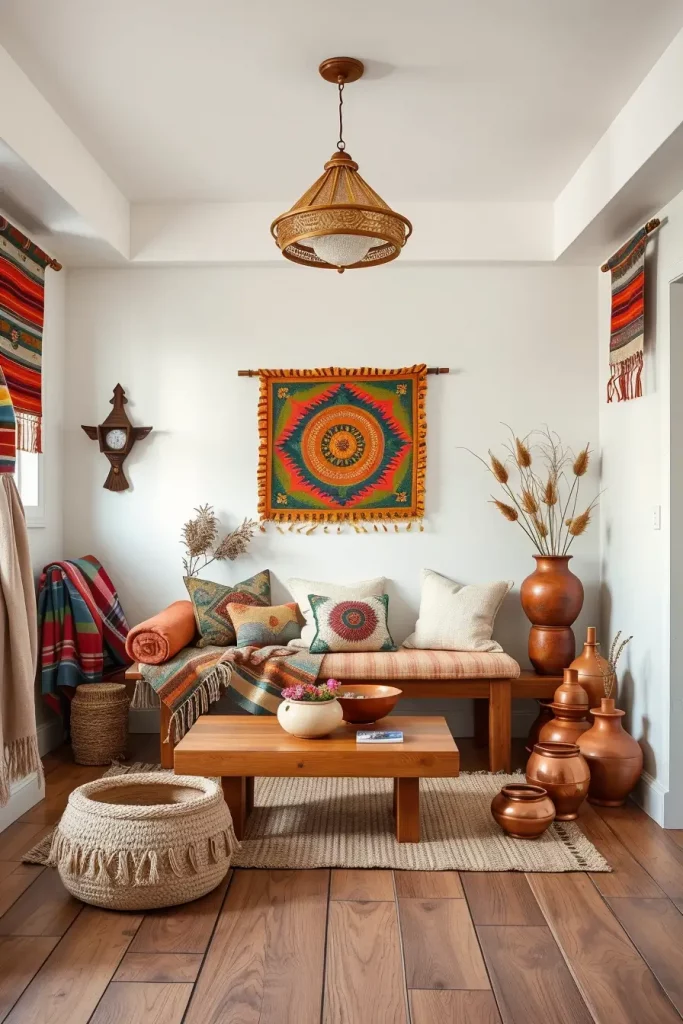
First, I set up regular white or gray walls and floors and follow by including throws with prints, cushions of alpaca wool and woven poufs in different color schemes. The use of wooden benches, pottery painted by hand and copper bowls makes everything look more traditional and handmade. Depending on the environment they are in, mirrors might be barely noticeable or strongly noticed by anyone entering the room.

I have found that Peruvian-style accents are suitable for today’s settings that are looking for something unique. According to Apartment Therapy, designers around the world are noticing Peruvian art because it mixes its historical background with fun elements.
Another way to add more authenticity is by placing an open rustic shelf with real instruments or hats woven by hand, letting these items shape and tell your story.
Vietnamese Bamboo Accents and Earthy Colors
It is known for having a mix of simplicity and elements that feel natural. I pick bamboo as my base material; it’s readily available here and also has meaning in Vietnamese culture. Its light nature and ability to match with several styles make it work for decorating furniture, lighting pieces or walls. The dominant colors are soft green, clay and taupe which create a positive and grounded atmosphere.
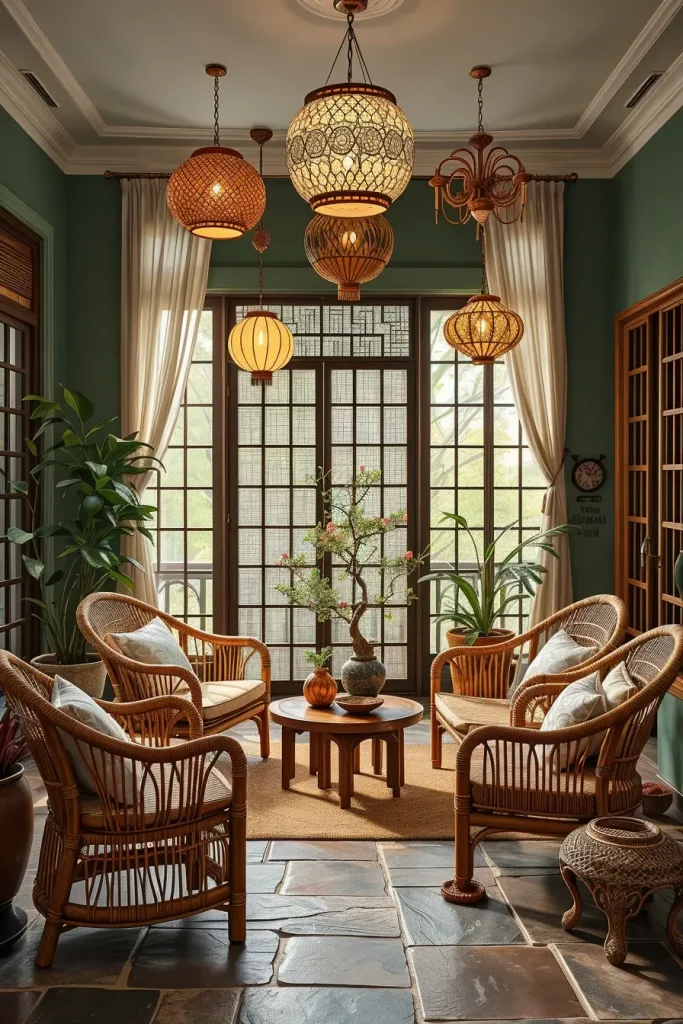
I usually add bamboo pendant lights, rattan chairs and woven room dividers to my interiors. Most flooring is either wooden or stone and the space is enlivened by using cotton floor cushions and paper lanterns. A peaceful presence can be added by placing an indoor fountain or a bonsai plant.

I appreciate that this kind of design helps create simple and very skilled pieces. Design Anthology Asia explains that Vietnamese materials support sustainability just as well as they add style. I like to use this look in my clients’ bedrooms or places where they like to sit and relax.
In addition, I would suggest placing a bamboo screen next to the large windows to filter the light and gently hide what’s on the inside.
Russian Heritage Decor With Rich Detailing
Russian interior design is extravagant, very detailed and does not shy away from traditional touches. I apply fancy craftsmanship, strong contrasts and decorative imagery to make my rooms look regal while still feeling comfortable. The colors deep red, forest green and gold remind me of the Russian imperial design I grew up with.
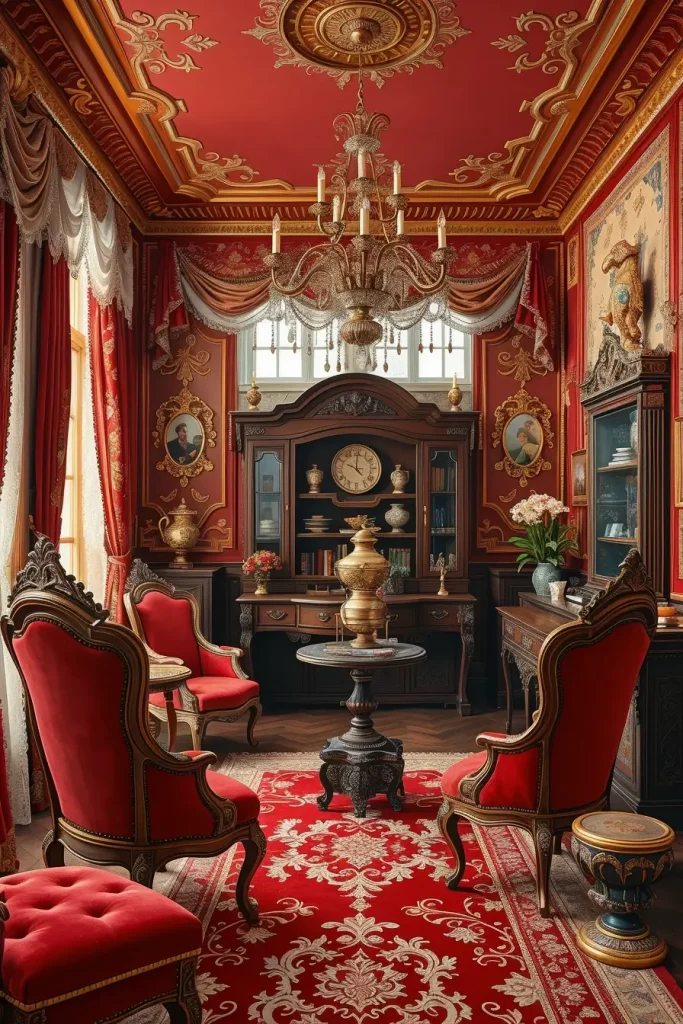
The furniture here is large and important: there are wood cabinets with carvings, velvet armchairs and chandeliers that look like they come from the past. I use icon art, lace curtains and samovars that are painted on the mantel or sideboard too. It evokes feelings of grandness and old memories.
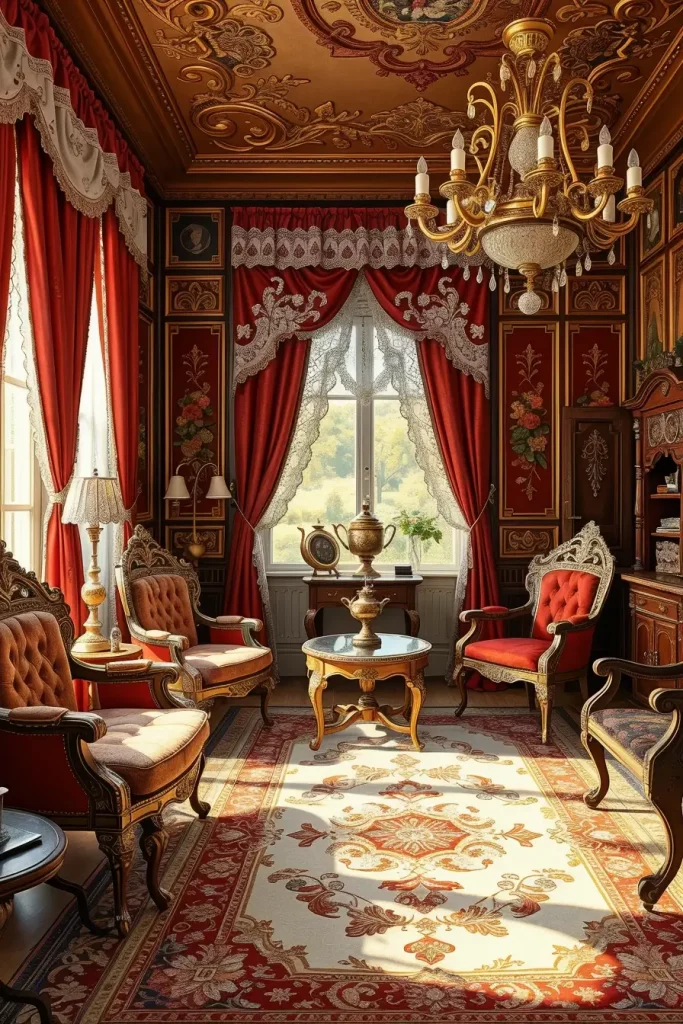
Personally, I feel that this style should be combined with bolder or simple colors and designs to stop it from overwhelming the room. As House Beautiful states, you can modernize this style by mixing lavish designs with understated house designs.
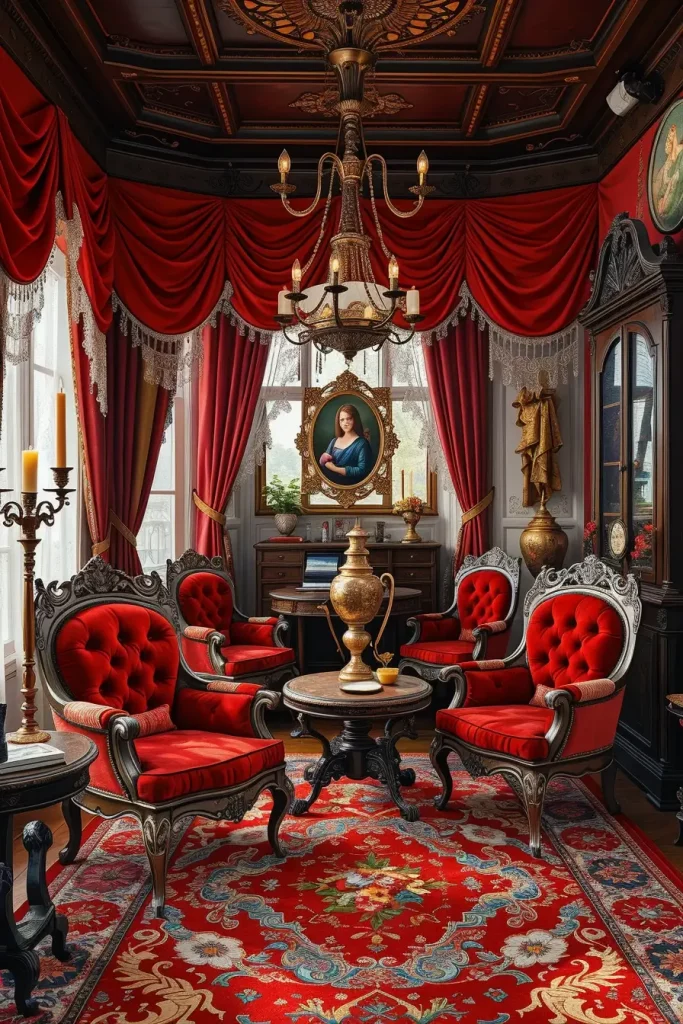
At the end, I’d put in a vividly patterned rug with Slavic designs and also add a large mirror in a gilt frame to brighten the space.
Egyptian Symbolism in Decorative Art
In Egyptian homes, ancient and modern styles join forces by using symbolic art, sculptural designs and sand-colored structures. I apply this style in rooms that were made for grand or symbolic statements. See solid stone accents, neat lines and subtle touches paying tribute to past civilizations.

Important aspects are lotus and papyrus prints, dark and golden tones and paintings on the walls that look like hieroglyphs. I pick furniture that is scarcely noticed and style it with different metallic items, decorative alabaster lights and statues of falcons or cats. Linen, marble and brass are the main materials used in designing.
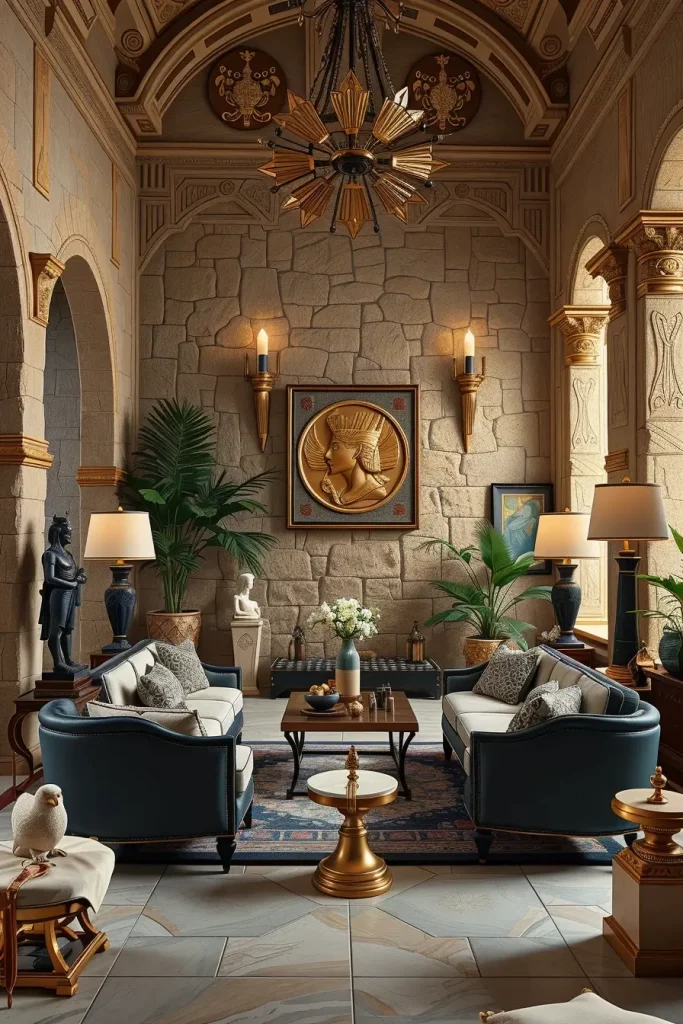
From what I see, this aesthetic suits clients for entryways, home libraries and bathrooms. Interior Design Magazine reports that the trend of Egyptian revival is enjoying a revival, mainly when it features luxury items.
A shallow pool of water or an indoor sculpture that resembles an obelisk would provide a great point of visual interest in the space.
Caribbean Breeze With Eclectic Island Mix
Adopting a Caribbean approach in design means highlighting colors, a relaxed atmosphere and different island elements. My starting point includes whitewashed walls, louvered shutters and lots of natural materials which makes everything look relaxed and then I add more decor. The goal is to fill the area with life just like the tropics.
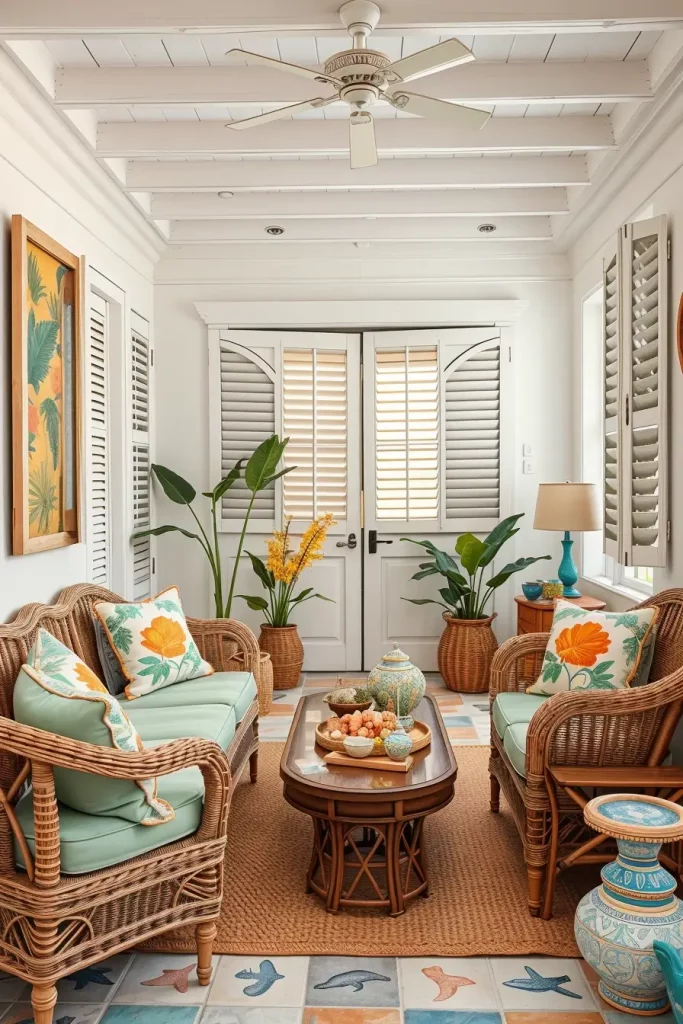
Furniture is made to be light in weight and gives a sense of openness such as wicker chairs, bench seats with slats and beds covered by net curtains. I include tropical objects, old maps and artistic pieces inspired by water magic. Turquoise, coral and lemon yellow are used a lot to make the artwork extra colorful.
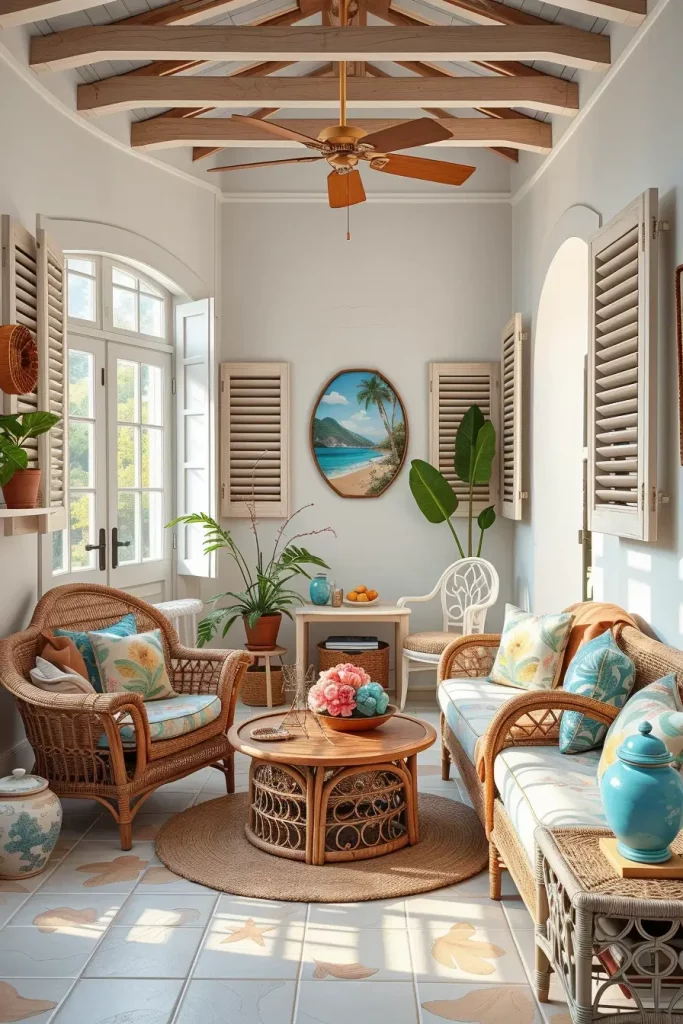
You could easily use this look in your sunroom or any guest house. According to Coastal Living, people inspired by the Caribbean style care about standing out with natural materials and their trend helps today’s homeowners achieve comfort and individual flair.
Another idea would be to add more hanging plants or lights that look like shells to feel even closer to being on holidays.
Global Vintage Fusion With Modern Touch
I have found that incorporating classical vintage pieces with contemporary furniture looks especially exciting. Pairing different objects in a room gives a characterful look and keeps the space from feeling messy. Every object should have a story and also blend well with the rest of the interior.

I use mid-century sofas, a Moroccan side table, Japanese prints and Scandinavian ceramics in my home. The neutral walls and stylish lights allow each vintage item to be noticed. Even furniture that is not in great shape can seem special when placed with a minimalist bed or an Eames chair.
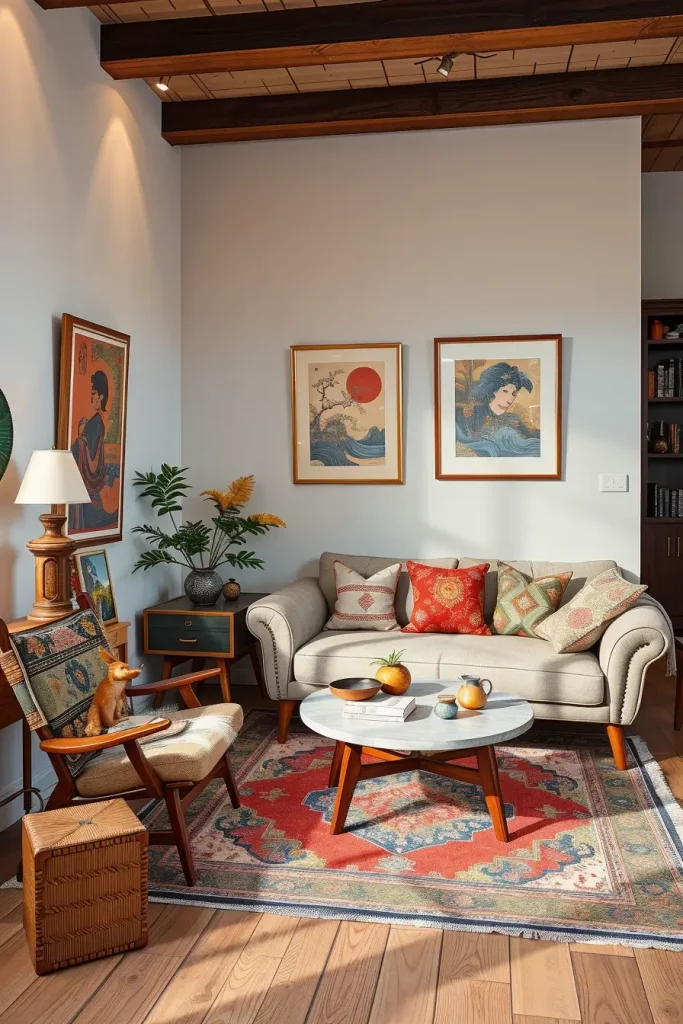
People usually like this style since it looks both comfortable and updated. According to The Spruce, the trend of mixing old with new is important in design because it features both sustainability and personality.
Another tip I have to finesse this style is to display framed mementos like maps, pictures or little mirrors from other countries in a gallery wall.
Creating a World-Traveler’s Gallery Wall
According to my experience, gallery walls are an effortless way to make your home more international. It’s a place where you keep memories of what you’ve experienced or what you hope to do. Putting it in the living room or hallway adds interest by making it stand out. Creating a story by blending prints, artifacts and photographs of different cultures makes it both personal and appealing to the eye. This design is useful as you can expand or shift it according to your travel or hobby changes.
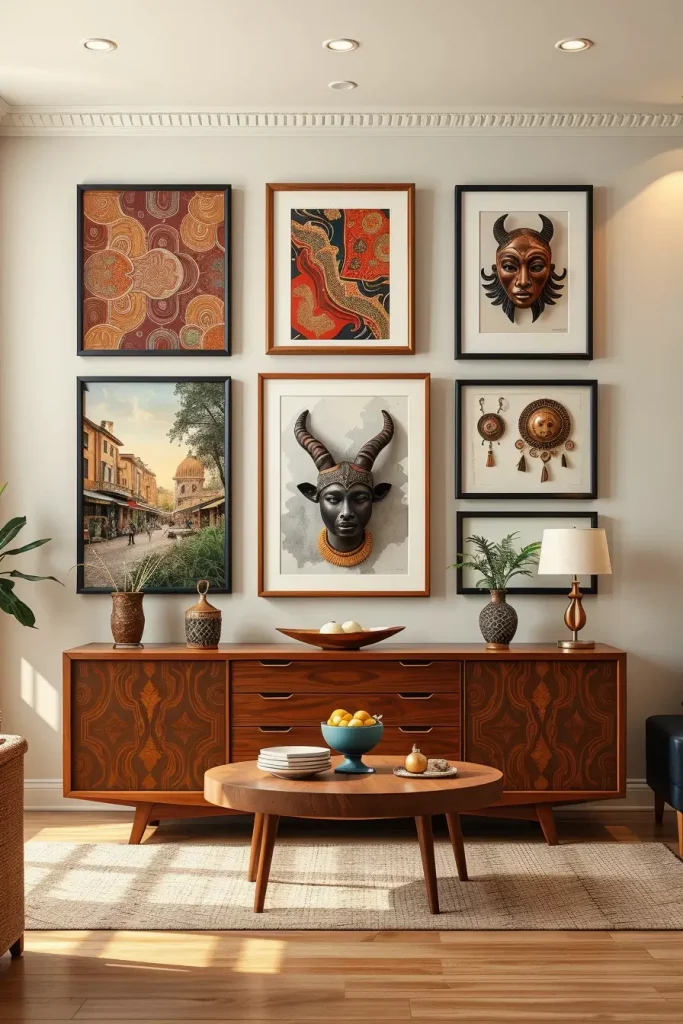
I want each object in my gallery wall to have some visual or emotional meaning. I enjoy using Indonesian framed batik with black-and-white photos taken in Morocco by photographers. A carved African tribal mask next to a Japanese watercolor painting usually creates a nice balance for me. I make sure all the frames are similar so everything goes together, but I mix the sizes and the feel of the pieces to prevent them from feeling the same. Mixing 2D and 3D decor, for example brass medallions and small woven baskets, makes the style more vibrant.
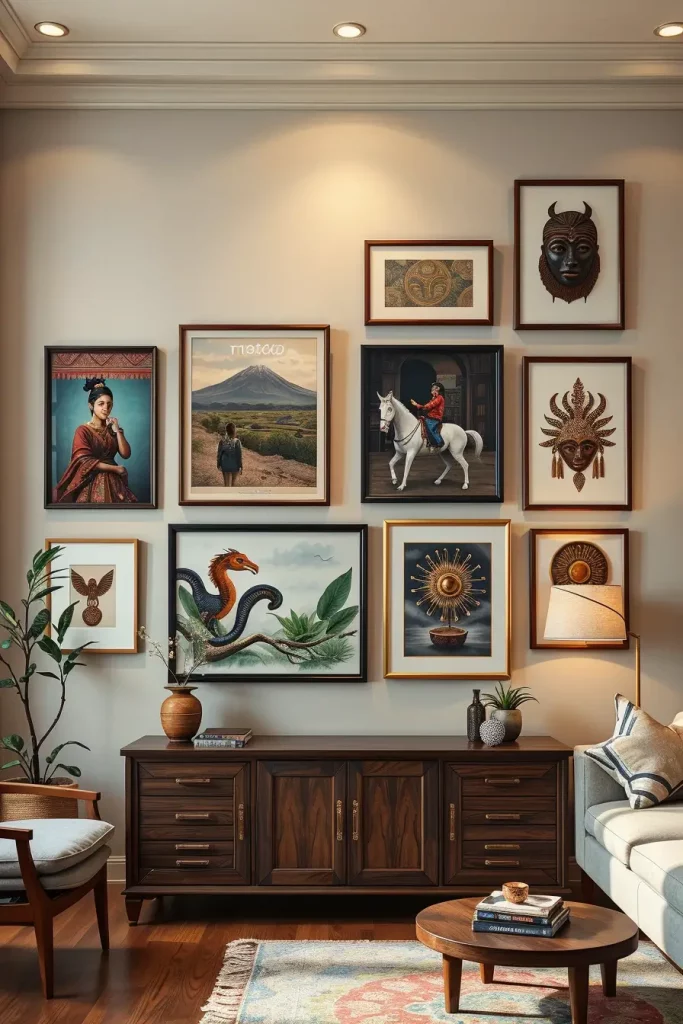
Personally, I view this strategy as a lovely way to remember all the events that formed our lives. Justina Blakeney, who runs Jungalow, frequently tells her clients to add items that matter to them in their homes and this advice makes sense to me as well. When clients notice elements of their lives in the interior, they tend to feel an emotional connection to the space. If you make your gallery wall personal, it will clearly tell its story.
To upgrade this part, set up flexible picture lights that help spotlight the most important items in the gallery. This increases the drama of the area and also makes the decor more elegant.
Layering Cultural Rugs, Textiles, and Fabrics
Blending textiles from other places gives any area an inviting and lush look. I’ve tried this design in bedrooms, lounges and also in home offices. It fits really well in plain or uninteresting rooms that want a touch of elegance. If you put a Turkish kilim on top of a large jute rug or throw Peruvian alpaca fabric across a Scandinavian seat, you create a place that is both comfy and worldly. Besides, you can change the look of your home by updating the fabrics with each season or changing your preferences.

I check the style, the color and where it comes from when looking at textiles. I prefer to have Moroccan Beni Ourain rugs with neutral colors because they are soft and simple. I could also add a colorful and textured Indian kantha quilt that was made with hand embroidery. I also display Guatemalan huipils on my walls because they are very interesting and show real craftmanship. You can add linen, wool, silk and cotton to your outfit to feel a textured style rather than using a single type of fabric.
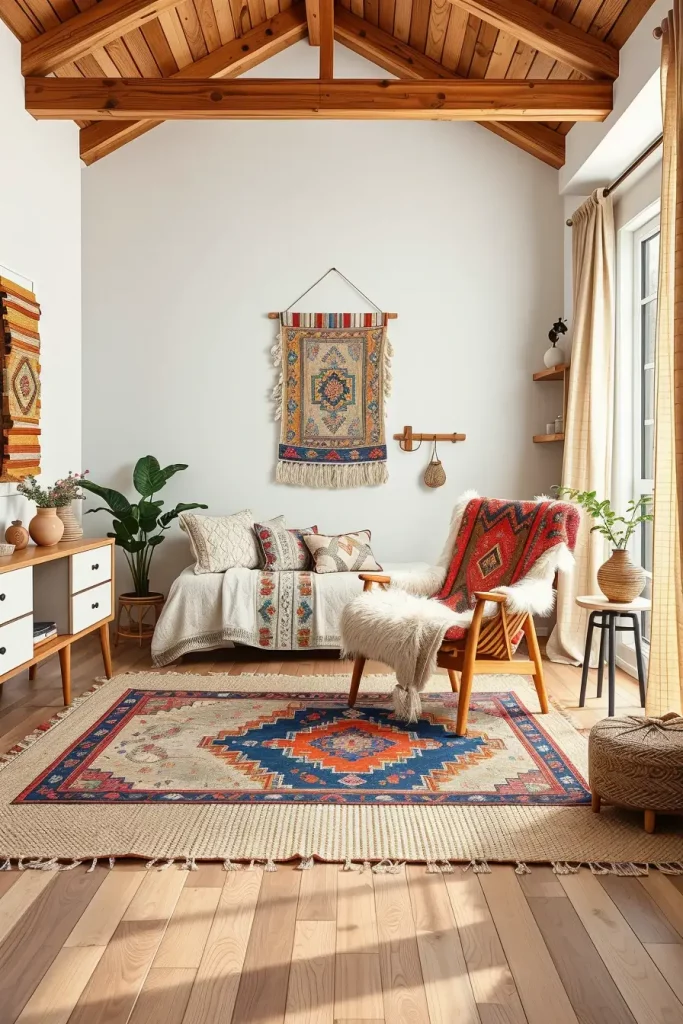
I’ve used this technique in my home and it has greatly improved comfort and added more beauty to the space. A good advice that came from Architectural Digest is to consider your textiles as pieces of art and try to create harmony and balance, not sameness, when arranging them together.
Consider putting floor cushions or poufs with rich tribal designs into the room. This makes the space more comfortable and gives more seating, helping to create a true lived-in worldwith a strong global style.
Mixing Global Patterns for a Balanced Look
When you use patterns from different cultures, it may look confusing, yet putting them successfully together can turn your room into a lively space. I think that contrast and cohesion matter the most. If your room is inspired by other countries, you should start with a big pattern like a Moroccan tile print rug and go for smaller designs in decor such as ikat pillows or shibori curtains. Picking a common set of colors, either earthy or bright, ensures the space is not cluttered.
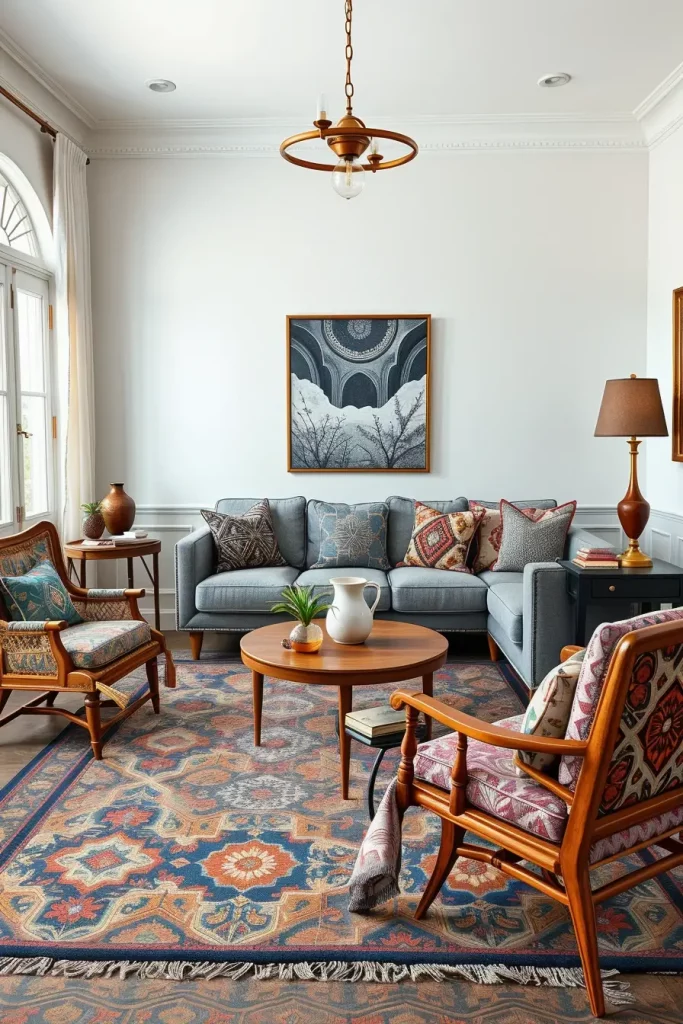
I tend to mix African mud cloth on the cush ion with Persian designs on a side chair or bench. They start from different cultures, but they all blend well because of their shared geometric designs. To help every scene look good, I use furniture in one solid color for the background. The colors on a modern sofa in soft gray or navy bring out the mixed patterns without taking over the entire room. To make everything flow, put in metallic decor such as brass table trays or copper lamps.
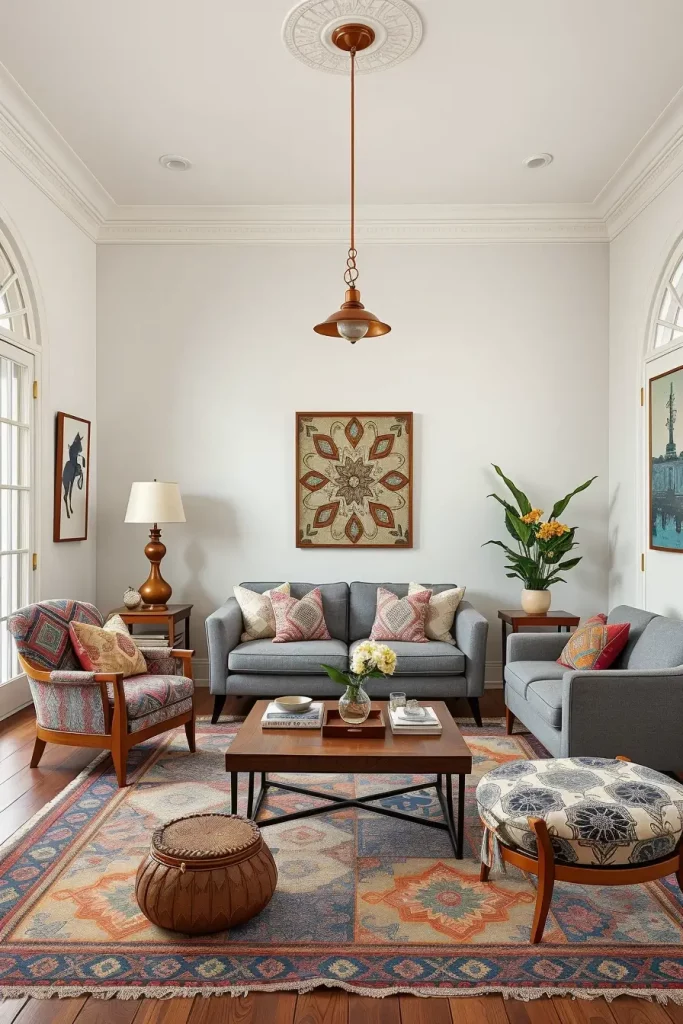
One advice I usually share with my clients is not to let every item try to get attention at once. Use bold patterns in small amounts and let them attract attention. To balance the appearance, I use wood, rattan and stone in the design. It agrees with tips given by designers at Elle Decor, who point out that simpler foundations are good for drawing attention to the decorative highlights.
The main thing that seems to be absent here is artwork that fits between the different patterns. Having abstract paintings that use the same colors as your global prints ties the whole design together.
How to Curate a Globally Inspired Space
Having a globally influenced home is mainly about building links, rather than just buying things. A mood board usually contains elements I admire from various cultures, for example Japanese, Moroccan and Nordic ones. The next thing is selecting attention-grabbing items such as a carved Indian console and a plain Scandinavian bookshelf, to set the structure of the room. Next, I add additional pieces that keep the original theme but do not take over the room.
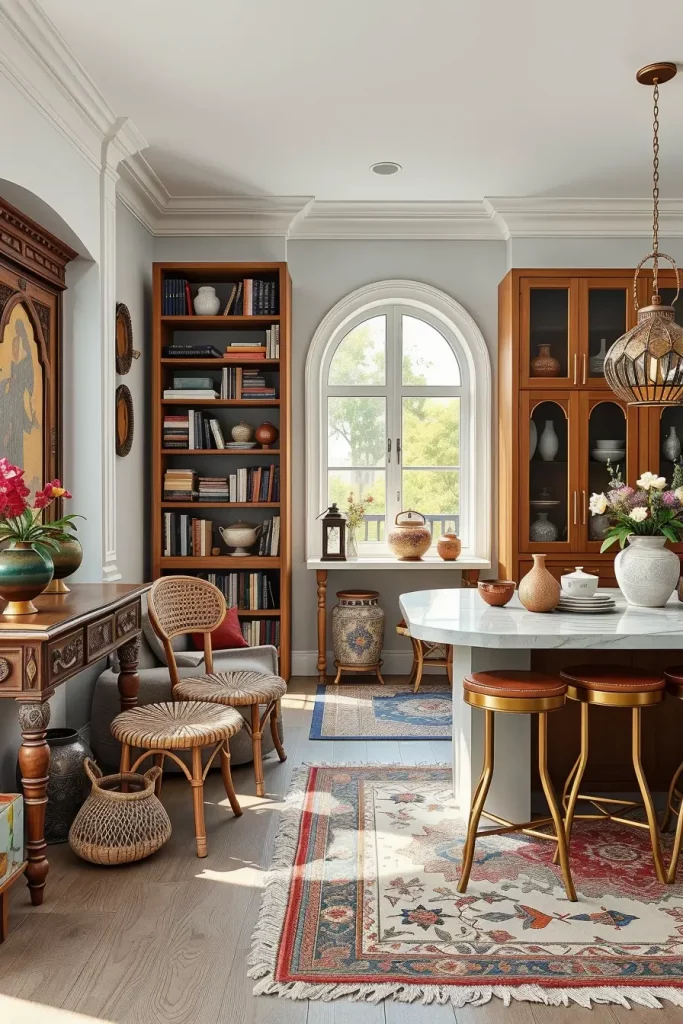
Each piece of furniture is selected carefully by me. Southeast Asian rattan and Italian Sofa are well suited for each other. Placing a Persian rug under a Danish coffee table brings together the beauty of the past and the present. A Moroccan lantern could be hung over a white marble island and a group of French bistro stools in the kitchen. All the components should assist with the stage’s functionality, at the same time adding something to the plot.
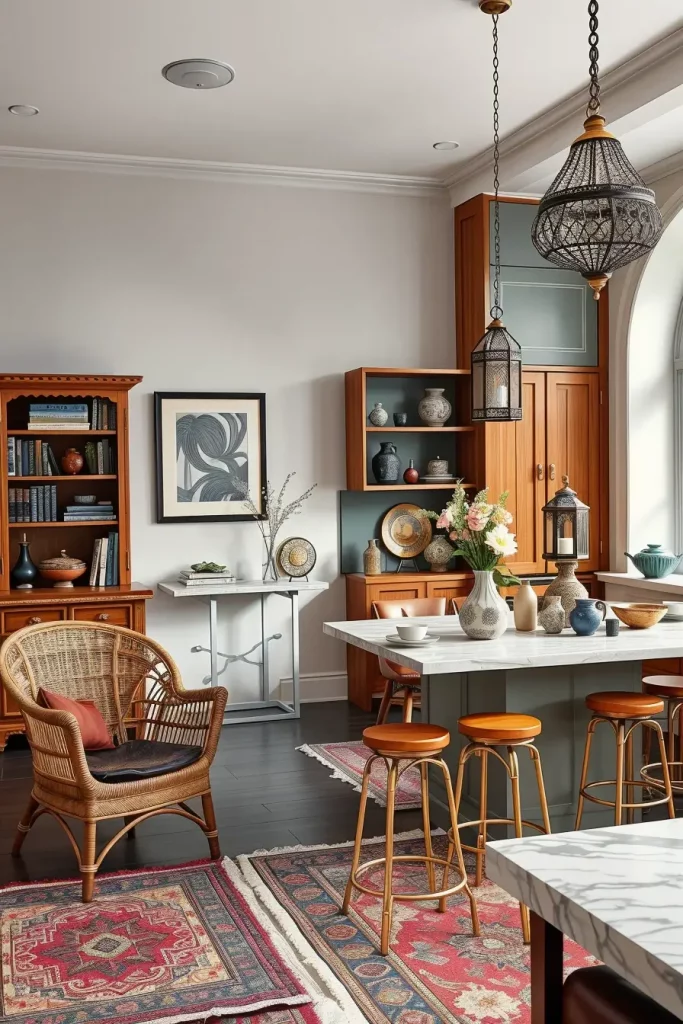
From what I’ve observed, people most often fail to think about how their DIY projects will be used as they copy Pinterest images. Interior designer Nate Berkus often advises to “buy only what you love,” which I think is especially important in a global-style home. Your area should look as though it was built for you, not as if it were cloned from other places.
A truly worthy curated design includes vintage and handmade objects. Bringing in flea market items, handmade pottery or special edition fabric gives a soulful feeling to your space.
Having global home decor style in your home celebrates cultures, the work of craftsmen and each person’s experiences. Whether you’re curating a gallery wall or layering rich textiles, each element tells a story. I’d love to hear how you’ve added a global touch to your home, so feel free to share your ideas and experiences in the comments below!
